
MEDLEMSBLAD NORSK OSTEOPATFORBUND • NR. 4 • 2022 • 4. ÅRGANG - Side 10-11 Osteopathy 2.0 - Side 24-25 Sports Medicine - Side 14-15 Safety in the Cervical Spine NORSK OSTEOPATFORBUND SuomenOste o paattiliitto r y sdnalniF etsO o dnubröftap r f •
Kjære lesere og kolleger,
Med stor glede ønsker jeg å presentere den fjerde utgaven av Nordic Osteopathic Journal. På lik linje med de tidligere, er denne utgaven et resultat av et samarbeid mellom de nordiske landene. Dette ville ikke vært mulig uten forfatterne og bidragsyterne.
Bladet inneholder noe for enhver, og jeg håper at du finner noe som fenger deg. I
Redaktørens hjørne
denne utgaven vil du blant annet kunne lese om hvordan man kan bruke kunstig intelligens i en osteopatisk praksis, Safety in the Cervical Spine og Pål Andre Amundsen gir oss en presentasjon av hans Ph.D.- prosjekt.

På vegne av redaksjonen ønsker jeg å takke alle som har bidratt til å få dette bladet ut til medlemmene.
God lesning, Mvh Ingrid Nicander, redaktør
Kjære medlemmer,

Vi er stolte av å kunne presentere nok en flott utgave av Nordic Osteopathic Journal, med gode bidrag fra hele Norden. Magasinet er et produkt av godt samarbeid og stor arbeidsvilje i vårt nordiske miljø. Det er bra for oss at vi står samlet i Norden, med felles front for autorisasjon, god utdanning og annerkjennelse.
I skrivende stund viser Helsedirektoratets statistikk at 214 osteopater har fått autorisasjon i Norge. Vi ønsker mange flere autoriserte kolleger og vi vet at det er totalt ca 500 kvalifiserte søkere, hvorav godt over 400 er medlemmer av NOF. Vi vet at en god del av dere har søkt og fortsatt venter på svar. Normal saksbehandlingstid er opp mot tre måneder, så det kan ta litt tid. Har du ennå ikke søkt, så gjør det straks. Det er varslet prisøkning for søknad neste år, pluss at vi vet at mva spøkelset fort kan komme tilbake for de som ikke har en autorisasjon på plass. Alle autoriserte medlemmer i privat praksis vil også bli innlemmet i NPE, til trygghet for pasient og osteopat.
Sjefen har ordet
Årets konferanse i København var et flott event – kred til våre danske venner for god organisering og stor innsats. Neste år er det konferanse på Island. Det hadde vært gøy om vi var en solid norsk gjeng som tok turen. Det blir garantert en faglig god opplevelse, i tillegg til en mulighet til å se Island. Har du ikke vært der, så kan det varmt anbefales.
NOF arrangerte fagdag i Oslo 22 oktober og tema for dagen var idrettsmedisin. Takk til forelesere for godt levert, og vi er glade for bra oppmøte, både fysisk og digitalt. NOF jobber hardt for å kunne gi dere alle tilgang til gode webinar, fagdager og kurs. Dette er en medlemsfordel som vi vet at mange setter pris på. Flere webinar og fagsamlinger er også et resultat av godt samarbeid og delingsånd i Norden og i EFFO miljøet. Følg med på jevnlige oppdateringer via vårt nyhetsbrev, og bli med det du kan. Vi ser også en fin utvikling ved at osteopater blir engasjert som forelesere på andre arenaer, blant annet på «Kvinnehelsekonferansen» og «Muskel- og skjelettkongressen». Ta gjerne turen også hit for litt faglig påfyll.
Med ønske om en god vintersesong!
Mvh
Tomas
Kontaktinformasjon:
Koordinator:Tomas Collin, Kjernåsvn. 13 A, 3142 Vestskogen
Redaktør: Ingrid Nicander ingrid_nicander@hotmail.com Tlf. 991 50 488
Faktura/postadr.; Norsk Osteopatforbund - NOF c/o Optimal Regnskap AS Orkdalsveien 67 7300 Orkanger
E-post: nof@osteopati.org Webadresse: www.osteopati.org
Styret i NOF:
• Leder: Tomas Collin e-post: leder@osteopati.org Tlf. mob: 913 28 430

• Nestleder: Christin Stormyr e-post: cjstormyr@yahoo.com Tlf. mob: 976 83 833
• Styremedlem: Matias K. Fjeld e-post: mkfjeld@gmail.com Tlf. mob: 988 36 312
• Styremedlem: Kim Andre Brandtzæg e-post: post@brandtzægosteopati.no Tlf. mob: 976 19 558
• Styremedlem: Hanna Åsen Asphaug e-post: hanna.a.asphaug@gmail.com Tlf. mob: 951 81 856
• Varamedlem: Ida Olaussen Bryn e-post: bryn@baerum-osteopati.no Tlf. mob: 920 56 986
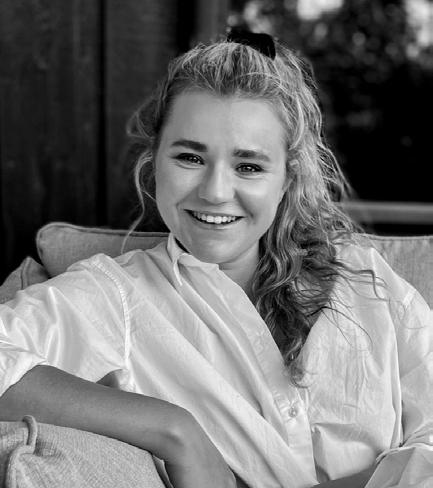
• Varamedlem: Jonas Bjarnason e-post: jonas_b30@hotmail.com Tlf.mob: 401 00 574
Adresseforandring:
Viktig!
Husk å melde i fra når du bytter e-post og/eller postadresse. Du kan selv endre ved å logge inn på medlemssidene, alternativt send beskjed til nof@osteopati.org
Pasientbrosjyrer og profilartikler:
Kan bestilles i vår webshop via medlemsweb. Her finner du det du trenger av brosjyrer, markedsmateriell, skjorter mm.
Collin, leder NOF
Ordrer sendes fortløpende fra vår samarbeidspartner Norgesprofil.
2 Nordic Osteopathic Journal
NORSK OSTEOPATFORBUND
use of artificial intelligence and sensor devices in an osteopathic practice
Osteopatiakoulu Atlas Update: evolving osteopathic education
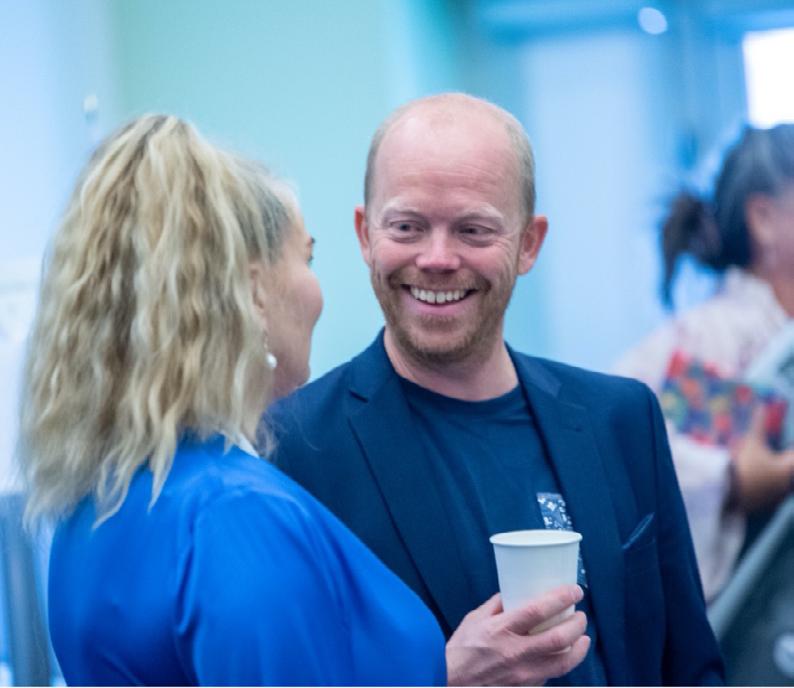
The second year of the Master’s Degree Programme at Metropolia University of Applied Sciences - a brief report
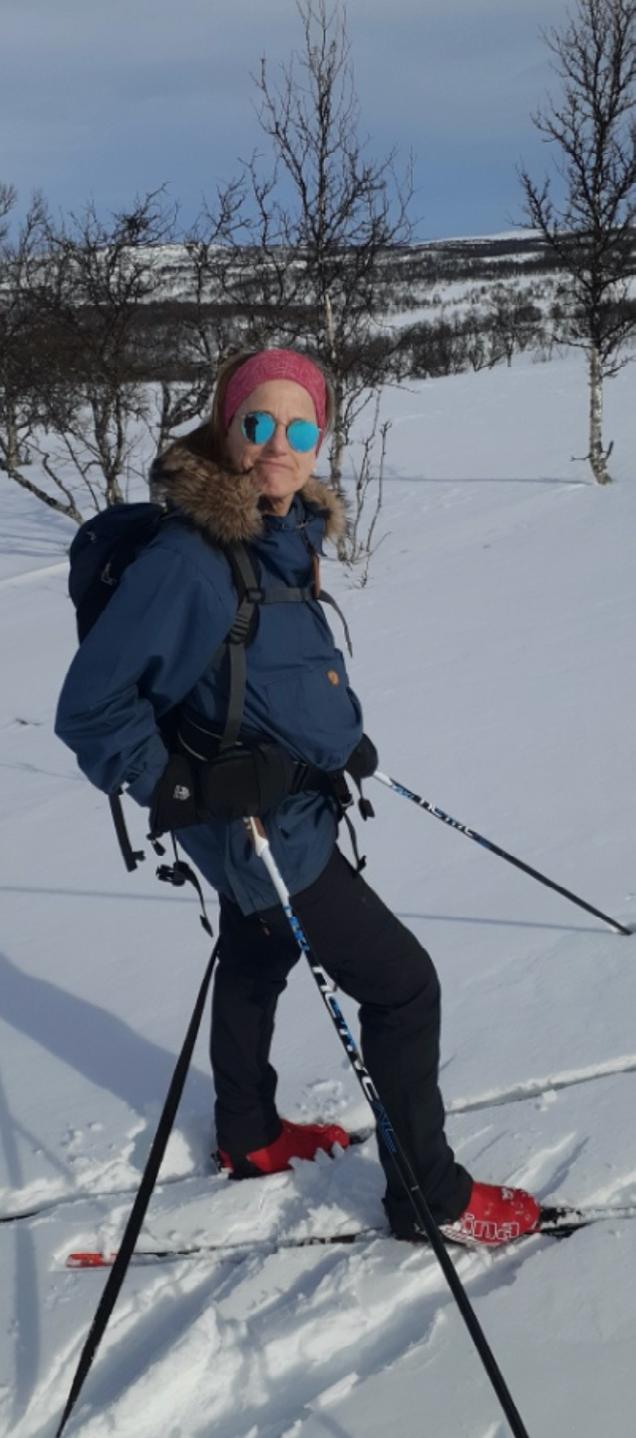
Digest from the OsEAN’s 8th “Open Forum for Osteopathic Education” conference
The Role of the Osteopath in Sports Medicine – injury prevention and rehabilitation

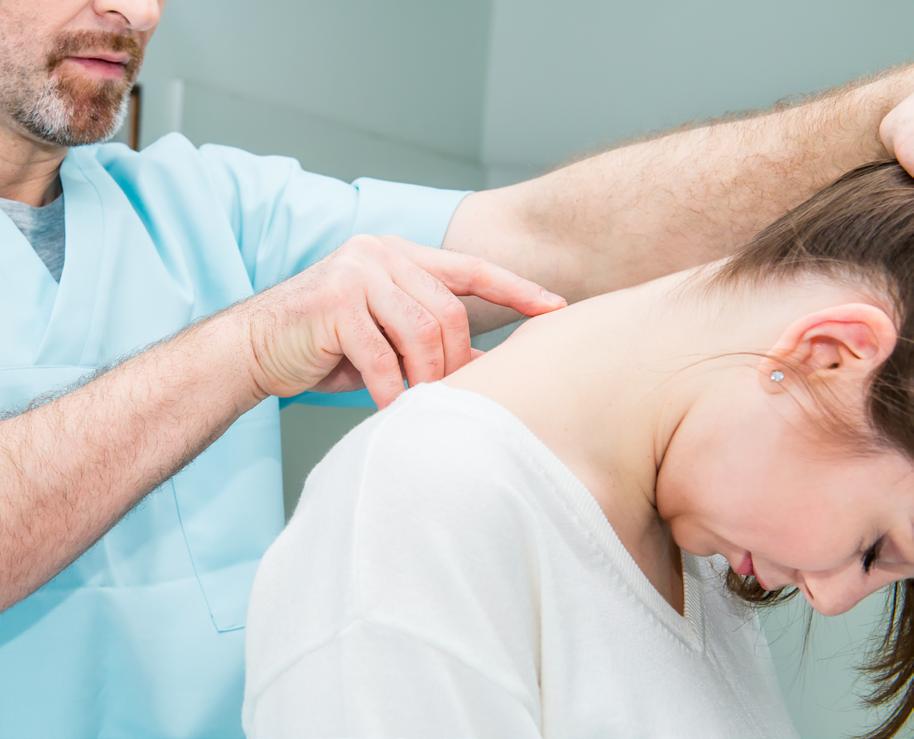
“Adapting and evaluating the use of supported work placements for people who are unemployed with persistent pain”.
EFFO Copenhagen - Impressions from a Nordic member delegate
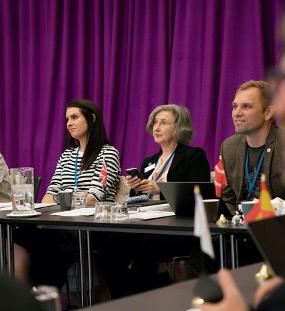
www.osteopati.org 3 Indeks: 5 12 14-15 26-28 28-30 19 16-19 20-21 22-23 24-25 Dear colleauges / Hva skjer fremover? 8-9 Nok en fagdag gjennomført 7 The 4th Nordic Osteopathic Congress Årets Osteopat 2021, Bente Amundsen Safety in cervical spine manipulation
The
14 8 25 28 7
Nordic Osteopathic Alliance
Tomas Collin
President of the Norwegian Osteopathic Association
leder@osteopati.org www.osteopati.org
Regulated since: 2022 Number of members: 450
Haraldur Magnússon
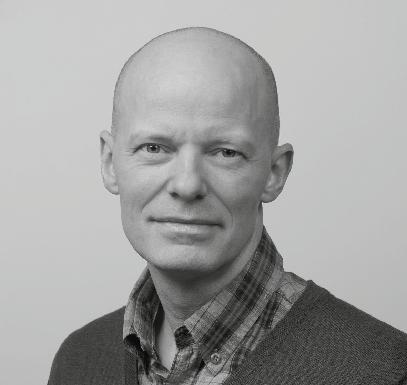

President of the Icelandic Osteopathic Association

Regulated since: 2005
Number of members: 3 and a few more pending
Laura Lee Kamppila
President of the Finnish Osteopathic Association
puheenjohtaja@osteopaattiliitto.fi www.osteopaattiliitto.fi
Regulated since: 1994 Number of members: 206
Emmelie Hansen
President of the Swedish Osteopathic Association
ordforande@osteopatforbundet.se www.osteopatforbundet.se


Number of members: 365
Hanna Tómasdóttir
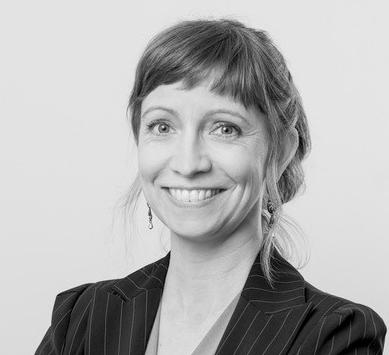
President of the Danish Osteopathic Association
hanna@danskeosteopater.dk www.danskeosteopater.dk
Regulated since: 2018 Number of members: 318

4 Nordic Osteopathic Journal
Follow ”Nordic Osteopathic Alliance” on Facebook to keep updated nordic_osteopathic_alliance
2022 has been a year full of activities for the osteopathic profession in the Nordics, despite the shockwaves emerging from the ongoing war in Ukraine. To make people meet and interact, seems more than ever to be a necessity to promote and preserve peace and prosperity.
The Nordic Osteopathic Alliance (NOA) constitutes the osteopathic associations of Finland, Sweden, Denmark, Iceland, and Norway. Together we continue our quest to make osteopathy regulated and recognised throughout the Nordic region. We are happy and proud to announce that four out of five Nordic countries have statutory regulation, with only Sweden not yet regulated. We hope that this will change in favour of regulatory measures in Sweden, which would be in line with what the Nordic ministry clearly stated already in 2019, with their vote for a common Nordic regulation of the osteopathic profession.
We see a positive development regarding osteopathic education in the Nordic region, as VIA University College in Den-

mark has announced that they are taking necessary steps to set up a fully accredited fulltime osteopathy programme of 240 ECTS. If everything goes as planned, the first students will be able to start, fall 2024. VIA will be a good contribution to the Nordic education community, with possibilities for academic exchange within the Erasmus programme.


Danske Osteopater hosted this year’s edition of the Nordic Osteopathic Congress, in Copenhagen. This was truly a great event with osteopaths gathered from the Nordics, Europe and beyond. Many good presentations, lots of networking, a great venue, and very well organised and hosted. We congratulate the Danish team lead by Hanna Tómasdóttir, with a congress well done. Read more about the 2022 congress in this issue of NOJ and save the date for next year’s congress in Iceland. It will be one to remember, for sure.
Finland and Metropolia successfully hosted this year’s AGM for the Osteopathic International Alliance (OIA).
In advance of the Congress in Copenhagen, Denmark hosted the European Federation and Forum for Osteopathy (EFFO) autumn conference and general meeting. These were good opportunities to promote not only the osteopathic profession in Finland and Denmark, but also the Nordic Osteopathic Alliance. With representatives in central positions within both the OIA and EFFO, the Nordic osteopathic community is very much involved in the ongoing work for the profession, globally.
Kind regards, The NOA presidents.
Laura Lee Kamppila, Finland

Emmelie Hansen, Sweden Hanna Tómasdóttir, Danmark
Tomas Collin, Norway Haraldur Magnússon, Iceland
www.osteopati.org 5
Hva skjer fremover? 10.-11. november MUSS-konferansen, Gardermoen 15. november Medlemsmøte i NOF på Zoom 04.-05. februar 2023 Kvinnehelsekonferansen 2023, Oslo 15. februar 2023 Medialt Tibialt Stressyndrom (MTSS) med Ken Fredin på Zoom 25. mars 2023 Fagdag, Oslo 14.-16. april 2023 Osteopathy: Building bridges towards the future of healthcare”, Palma de Mallorca 22.-23. april 2023 A functional approach to managing hip and spinal disorders in the athlete” med Carl Todd, Oslo 9.-10. september 2023 Nordic Osteopathic Congress, Reykjavik Dear colleagues, A functional approach to managing hip and spinal disorders in the athlete” 22.-23. april 2023 Kursoversikt
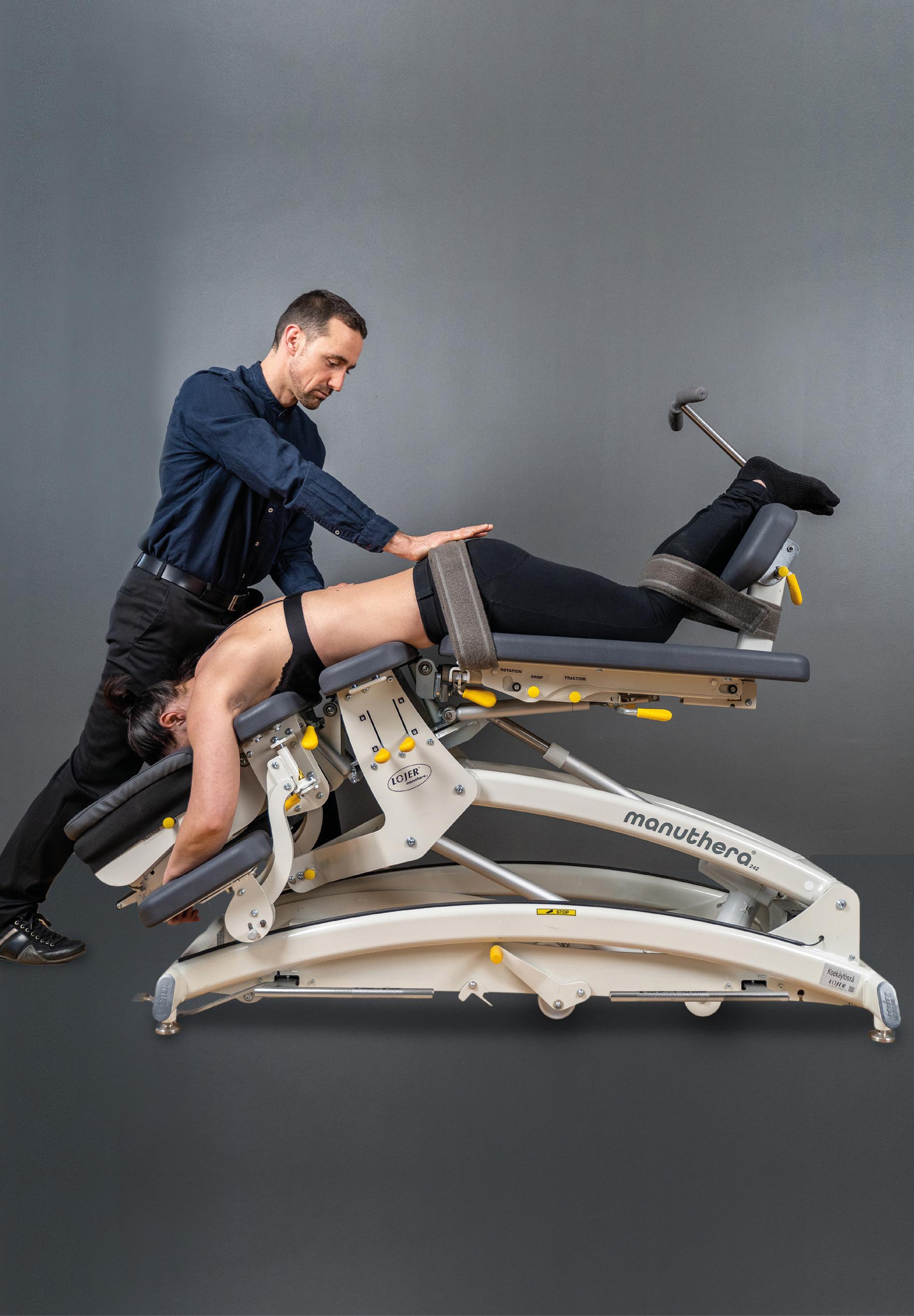






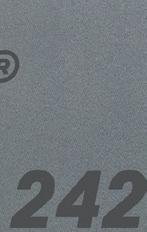

6 Nordic Osteopathic Journal Verdens mest allsidige behandlingsbenk. Bøyer seg som den menneskelige ryggraden. Se over 100 gratis videoer om hvordan du bruker Manuthera 242: WWW.MANUTHERA242.COM For mer informasjon besøk oss på fysiopartner.no eller ring 23 05 11 60 Leasing fra 2117,pr. mnd
The 4th Nordic Osteopathic Congress
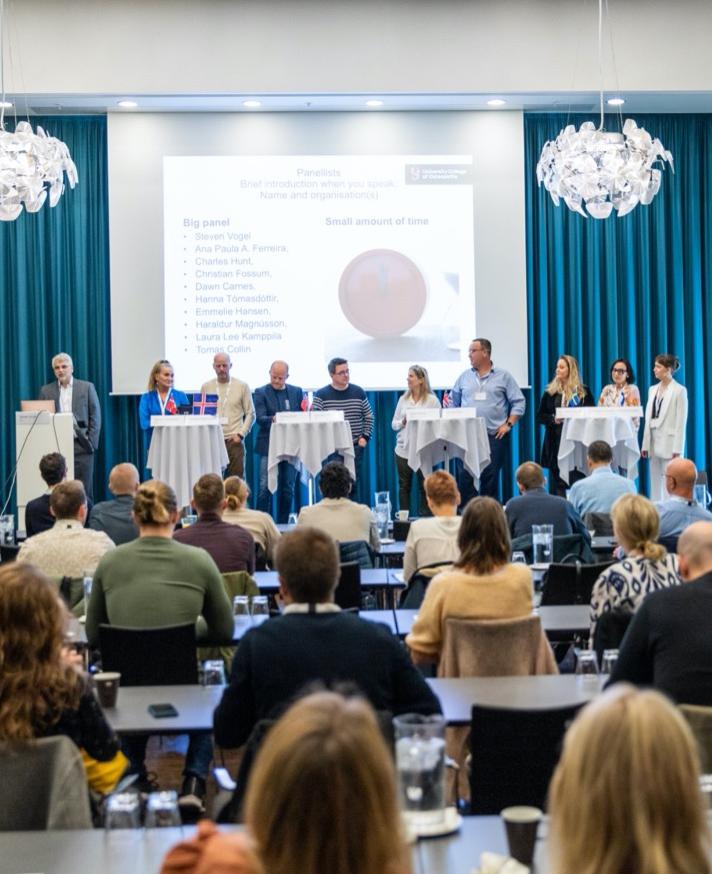
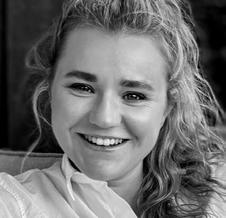
The 4th Nordic Osteopathic Congress was held in Copenhagen, Denmark. It was a pleasure to participate in such a great organized weekend filled with great speakers and program. The whole thing started on Saturday, but a lot of the participants and guests had already arrived either on Friday or days ahead.

We had been anticipating this weekend for months. It is always a delight meeting colleagues from the Nordic countries, and this year there was a lot of participants from all over the world, due to the EFFO- conference and General meeting.
The theme for the weekend was “The Future of Manual Therapy”, and there were great speakers such as Christian Fossum, Dr. Mandy Burton, Dr. Gerard Alvarez, Dr. Karen Goss, Dr.
Dawn Carnes and Steven Vogel. In addition to the speakers, there was a round table discussion about The Future of Manual Therapy, from an Osteopathic Perspective.
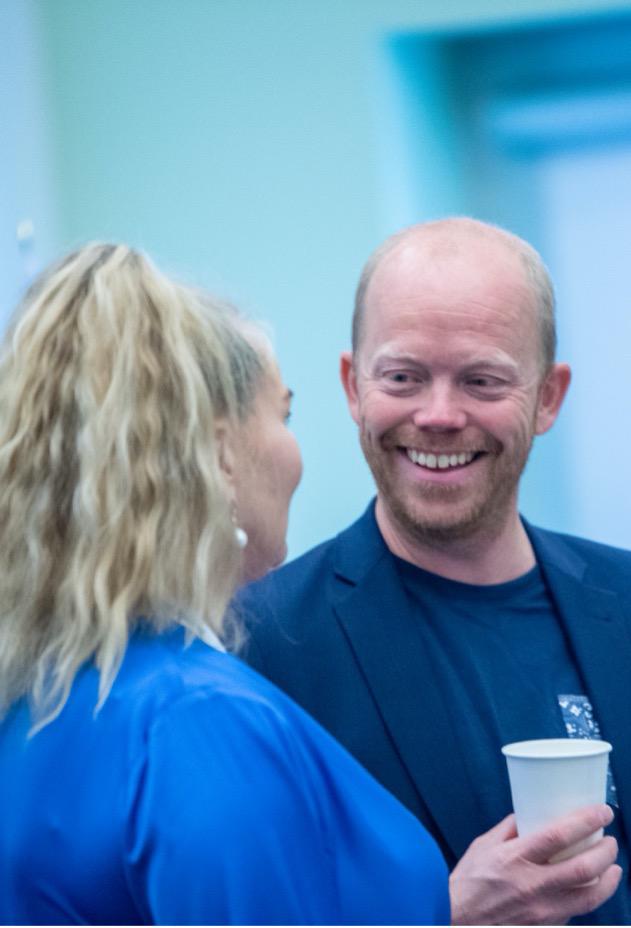
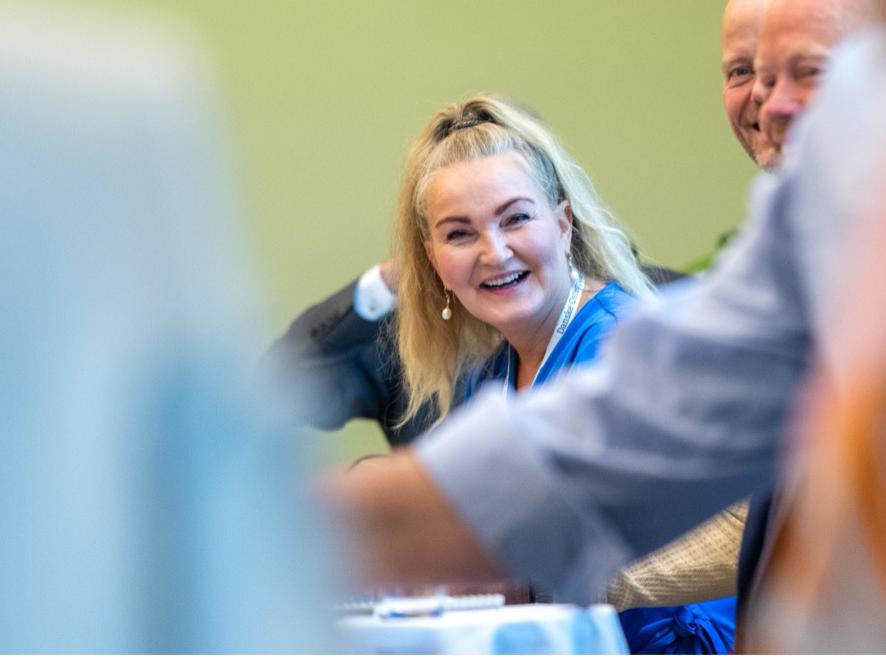
In addition to the scheduled lectures, there was also offered a guided tour in Copenhagen for those who were interested. There was something planned for the whole weekend. Seeing so many people interested in the presentations, in meeting new and old friends, discussion the future of Osteopathy, or just having a laugh of something completely else, was truly a joy. During the lunch, which was set to be a standing mingling buffet, we could eat Danish meatballs and talk about what the day had brought us.
Saturday evening was something special. We were all invited to a Gala dinner at the Tivoli
Hotel, where we had a three-course dinner, with live music that played the whole evening and a guest appearance of Tomas Collin and Maurice Cheng. Tomas with his musical gifts and Maurice with his voice. Dance, laughter and smiling faces – the evening was such a thrill.
The night ended… at some point… And followed by a full day on Sunday as well!
Thank you, Danske Osteopater, for hosting this years Nordic Osteopathic Congress.
www.osteopati.org 7
Ingrid Nicander Osteopath and editor
Photos: Pelle P.
Text: Ingrid Nicander
Årets Osteopat 2021, Bente Amundsen
Text: Øystein Tronstad
Over 30 år med nysgjerrighet
Selv om hun ble utdannet på 90tallet, er årets osteopat for 2021 fortsatt like interessert i ny kunnskap.
– Det er veldig hyggelig! Men det er også mange andre gode kandidater ute i bransjen, sier Bente Amundsen om å motta prisen som «årets osteopat» fra Norsk Osteopatforbund (NOF).
Amundsens lange yrkeskarriere og idrettsengasjement, sammen med hennes trang til diskusjon og læring, trekkes frem i forbindelse med utmerkelsen.
– Jeg har alltid vært veldig interessert i faget. Prøver å finne diverse kurs hvert år. Selv om ikke alt er nytt, er det nye tanker, måter å legge ting frem på og oppdatert forskning. Som medisinsk ansvarlig for turnlandslaget i mange år, har jeg hele
tiden hatt mange gode diskusjoner med trenere, andre terapeuter, hjemme og ute i verden, og utøvere som utfordrer meg, Jeg har vært heldig.
Fortsatt nysgjerrig I begrunnelsen står det ikke minst at «det er motiverende å se at en med lang klinisk erfaring fortsatt er opptatt av å holde seg faglig oppdatert».

8 Nordic Osteopathic Journal
– Mitt råd er å være nysgjerrig. Det er mye som har skjedd på forskningsfronten i løpet av årene, og det er vårt ansvar å være oppdatert, I tillegg, være interessert i andre fag og fagområder. Vi må ikke glemme den holistiske tankegangen i osteopatien
Nysgjerrighet, læring og utdanning skulle trekke henne til Berlin. Men før hun ble bitt av osteopatien var det fysioterapeut hun begynte som.
– Jeg gikk på en del manuellterapikurs, blant andre Kaltenborn og Cyriax, men etter å ha hørt på et foredrag om osteopati visste jeg veien videre.
Tilbake til Norge og inn på landslag
I Tyskland tok Amundsen flere idrettmedisinske kurs og underviste i medisinsk treningsterapi. En periode underviste hun for fysioterapi-studenter og jobbet for Olympia Stützpunkt (tyske Olympiatoppen), før livsreisen førte tilbake til moderlandet.
– I 2001 døde mannen min i en bilulykke. Jeg er fra Trondheim, og jeg bestemte meg for å starte nytt i 2003 og flyttet tilbake. Barna var små og som alenemor var det kjekt å få familien rundt seg. Jeg begynte å jobbe på Holanger Fysikalske (nå endret navn til Fjordgata fysioterapi og Osteopati) sammen med gode kollegaer.
På samme tid var osteopatien et fag som kjempet for anerkjennelse og seriøsitet. Det var ikke mange som var osteopat med idrettsmedisinsk kompetanse fra Tyskland.
– Som fysioterapeut i bunn kunne jeg bruke autorisasjonen inn mot helsevesenet. Tilfeldigvis hadde jeg mange kontakter innen turn. Da landslagssjefen for herrene flyttet til Trondheim ønsket de å bygge opp det medisinsk støtteapparatet i 2008, for satsning mot OL i 2016. Siden jeg hadde turnere på klinikken, spurte de om jeg kunne tenke meg å bidra.
Unge utøvere og pubertet
Fra 2009 til 2022 har Amundsen vært med turnlandslagene til EM og VM hvert år. Frem til korona jobbet hun med herrene. Nå har hun byttet til kvinnene, en overgang som fascinerer på flere måter.
– Det er interessant, for kvinner og menn, gutter og jenter er forskjellige. Det er unge utøvere i en periode hvor det er mye som skjer.
Bente Amundsen
Født: 1963
Fra: Trondheim
Fysioterapeut 1990. Osteopati på deltid i Berlin 1998. Eksaminert ved Maidestone i 2006. Undervist ved Rehazentrum Berlin. Med turnlandslaget siden 2009. Driver Nidaros Osteopati og er medeier i Fjordgata Fysioterapi og Osteopati.

at du gjør det. Idrettslag har som regel en stram økonomi. Jeg håper også at osteopati, med autorisasjonen, skal kunne koble oss opp mot den idrettsmedisinske karriereveien til Olympiatoppen. I Norge er det viktig om du ønsker å jobbe med toppidrett.
Videre har hun et håp om at autorisasjon og anerkjennelse som helsepersonell skal hjelpe de unge klinikerne.
– Det er fortsatt tungt å bygge opp en egen praksis som osteopat. Du må investere masse tid, være fleksibel og imøtekommende. Det er ikke en A4-jobb. Å jobbe sammen med andre i et team er viktig.
I Amundsens yngre dager annonserte de via Gule Sider, noe som ikke finnes lenger. Men fysiske møter og jungeltelegrafen mener hun er like viktig som for 20 år siden.
– Jeg ser mange er veldig aktive på sosiale medier. Det er kjempebra, samtidig som at jeg er usikker på hvor mye nytte det har. Men igjen, det er kanskje min generasjon som føler vi blir invadert av informasjon. Man kan stille spørsmål til hvem man ønsker å nå frem til.
En aktiv terapeut og livsstil Personlig endte idrettskarrieren i turn og friidrett på krets- og nasjonalt nivå. Fysisk aktivitet er fremdeles en viktig del av det hun ser på som et sunt liv, og hun løper til jobb hver dag.
– Jeg kommer til å jobbe lenge. Osteopatien og jobben har vært, og er, essensiell i livet mitt.
Vekst og pubertet og alt det innebærer. En senior er for eksempel 16 år.
Idrett, barn og kvinnehelse er noen av områdene hun brenner for. For Amundsen er det viktig at de skal kunne holde på med idretten sin lengst mulig.
– Mye av det jeg jobber med innen turn er balansegangen mellom styrke og bevegelighet for å unngå idrettsskader. Hvordan komme skadefri inn og ut av puberteten.
Håper og tror på autorisasjonsløft For de som vil jobbe innen idretten er anbefalingen hennes å starte tidlig og i mindre lag.
– I begynnelsen er det ikke for å livnære deg
En gang i tiden gikk hun på formingslærerskolen. Å være fysisk aktiv og jobbe manuelt med hendene er noe denne terapeuten trives godt med.
– Skog og mark er viktig for meg. Liker alle aktiviteter ute, elsker fjellet og sjøen. Håndverk er også en viktig hobby.
Øystein Tronstad
Osteopat, Personlig Trener og Journalist
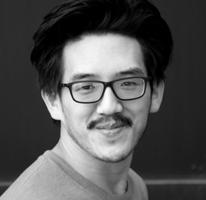
www.osteopati.org 9
Osteopathy 2.0 - a new way to view the osteopathic therapeutic alliance
Text: Robert Shaw
The paper I will discuss here belongs to a series of journal articles that have been produced by the Active Inference Research Group. Last year I introduced one of these papers (Bohlen et al, 2021) in the NOJ. Several other papers have now been published, Esteves et al (2022), Kim et al (2022), McParlin et al (2022) and Shaw et al (2022), and others are in the pipeline. This is building up a body of published work using multidisciplinary concepts to open up a new and exciting research agenda for osteopathy. As a profession we also have a critical mass of researchers who can take advantage of these opportunities. We can then begin the process to update osteopathic theoretical constructs, and develop an Osteopathy 2.0.
Our recently published paper (Shaw et al 2022) looks at a novel way to consider the osteopathic therapeutic alliance. Using concepts from neuroscience, phenomenology and psychology, insights are provided to help understand the factors that influence patients' experience of pain and their reactions to treatment. We argue that a key factor in this process is the therapeutic alliance. The ideas presented maybe a challenge to traditional osteopathic explanations of treatment, and move away from the notion of the osteopath as expert. I will highlight some key themes from the paper here.
An understanding of the therapeutic alliance and attachment theory demonstrate that the osteopathic therapeutic encounter is potentially a powerful mediator of change. If we can become more psychologically aware we can harness these ideas to enhance our therapeutic interactions. We are not advocating that osteopaths train to be psychotherapists, but rather engage in self-reflection and become more psychologically aware.
We introduce some ideas from phenomenology as this is concerned with an understanding of the nature of experience, and can be applied to an understanding of embodiment within the health care setting. It can help to illuminate the patient's 'life world', and give insights into patients perceptions of their pain and the narratives that have been created to explain it.
A central tenet of all these papers is active inference (AI). This is mathematical model that helps to explain how we operate in the 'lived-world'. An essential aspect of this is that we make many observations, which are
often unconscious, in order to navigate our way through a complex environmental system. A key assumption is that we have limited capacity to 'know' this world as much of it is hidden to our senses. Our powers to interpret our lived world are limited by our capacity to take in information and make sense of this information. We are restricted by being biological organisms with the senses we have to understand our surroundings. We are, therefore, compelled to try and predict outcomes. The more observations we have the better and richer the model we have to try and predict any given situation. We infer what actions are needed, for any given situation hence, active inference.
The key assumption here is that our brain makes predictions or inferences about the environment depending on not only sensations received, both exteroceptive and interoceptive, but crucially from a generative model based on prior experience. If there are differences between the expectation and the lived experience of the environment, this can be termed a prediction error. A new narrative or “update” is created to help make sense of the new experience.
A common experience in osteopathic practice is that people often ask; 'Is treatment going to hurt?' The osteopath via the therapeutic alliance can offer reassurance and can provide a different experience. This can enable and empower patients to change their experience in a positive way.
Enactivism complements the ideas from AI and proposes an interconnected and inseparable state between body, mind and environment. Within this model we are embedded, extended, emotive, embodied and enactive within our environment. An example of the extended self would be how we expand our embodiment and cognition into our surroundings e.g. a mobile phone. Stillwell and Harman (2019) provide a compelling argument for adopting an enactive approach to the understanding of pain. Enactivism provides a means to try and understand a patient's lived-experience.
Interoception is a key feature of our lived-experience. The brain receives sense data from both external and internal sources. These are the effects to some set of causes. However the brain does not know what those causes are, for example, an interoceptive sensation could be a tummy ache, hunger, anxiety, long-
ing, excitement or the flu. Whereas exteroceptive information from hearing, vision and touch are precise. Interoception is nowhere near as precise it can be blurry and vague. The brain has to construct a story or narrative to make sense of the feeling and this is based on past experiences. But this is open to interpretation and provides a best guess as to what is happening. As osteopaths use touch there is a direct way to influence interoception perception. Touch is also very much associated with previous attachment history and culture. Osteopathic touch is a combination of the practitioner's intentions and the patient's expectations. An understanding of these processes may help practitioners to appreciate the range of treatment reactions experienced, for what on the surface, could be a similar treatment. In other words patients will experience touch differently, and it is not easy to predict as a practitioner what that experience will be.
Where enactivism tends to focus on the individual experience, the therapeutic alliance could also be seen as a form of participatory sense-making. This involves not only the telling of a story by the patient but also an active engagement on behalf of the practitioner. For example if a patient has a set of prior beliefs that views the world as somehow dangerous or fearful. This will generate predictions that will keep the patient safe. For example avoiding social contact or movement, and minimise free-energy and thereby reducing uncertainty.
By employing the ideas of participatory sense-making the practitioner has the chance to help patients construct a different sense of their world, and open up new possibilities. For example encouraging patients to be able to move and for their pain not to get worse. This is very much linked to the ideas of narrative medicine which emphases the importance of listening to the patient's story and trying to avoid interpretations.
But Please Remember: We see and experience the world through our own filters, this may or may not have something to say about another person.
This does place an emphasis on the practitioner to be more open to the nuances of the patient's story, and to try not to fit the practitioner's model to the patient. The implications are clear for the therapeutic alliance; if we are open to challenging our beliefs and 'updating' them, we have a better chance of attuning to our patient's needs and engaging
10 Nordic Osteopathic Journal
in meaningful participatory sense-making. We, therefore, have the possibility to recreate more beneficial body narratives for our patients.
The ideas presented in this paper could be quite challenging. We hope that they can help to navigate a sometimes complex and uncertain clinical environment where we as practitioners are attempting to help people in pain. Further research is now needed to
References:
Bohlen L, Shaw R, Cerritelli F and Esteves JE (2021) Osteopathy and Mental Health: An Embodied, Predictive, and Interoceptive Framework. Front. Psychol.12:767005. doi:10.3389/ fpsyg.2021.767005
Esteves, J. E., Cerritelli, F., Joonhan, K., & Friston, K. (2022) Osteopathic care as (En) active inference: a theoretical framework for developing an integrative hypothesis in osteopathy, Frontiers in Psychology DOI: 10.3389/ fpsyg.2022.812926
explore ways of integrating enactive inference into practice, of developing psychological or mindful self- and body-awareness, and narrative communication skills for shared sense-making.
If this can be achieved then we are well on the road to an Osteopathy 2.0.
Robert Shaw PhD. Osteopath and Psychotherapist

Kim, J., Esteves, J., Cerritelli, F., & Friston, K. (2022) An Active Inference Account of Touch and Verbal Communication in Therapy. Frontiers In Psychology, 13. https://doi.org/10.3389/ fpsyg.2022.828952
McParlin, Z., Cerritelli, F., & Friston, K., Esteves, J. E. (2022) Therapeutic alliance as active inference: the role of therapeutic touch and synchrony Frontiers in Psychology, DOI:10.3389/ fpsyg.2022.783694
Shaw, R., Abbey, H., Casals-Gutiérrez, S., & Maretic, S. (2022). Reconceptualizing the therapeutic alliance in osteopathic practice:

Integrating insights from phenomenology, psychology and enactive inference. International Journal Of Osteopathic Medicine. doi: 10.1016/j.ijosm.2022.06.003
Stilwell P and Harman K. (2019) An enactive approach to pain: beyond the biopsychosocial model. Phenomenological Cognitive Science;18(4):637–65.
The


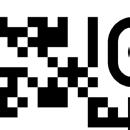

“Osteopathy: Building bridges towards the future of healthcare" will be held in Palma de Mallorca (Spain) on 14,15,16 April 2023.
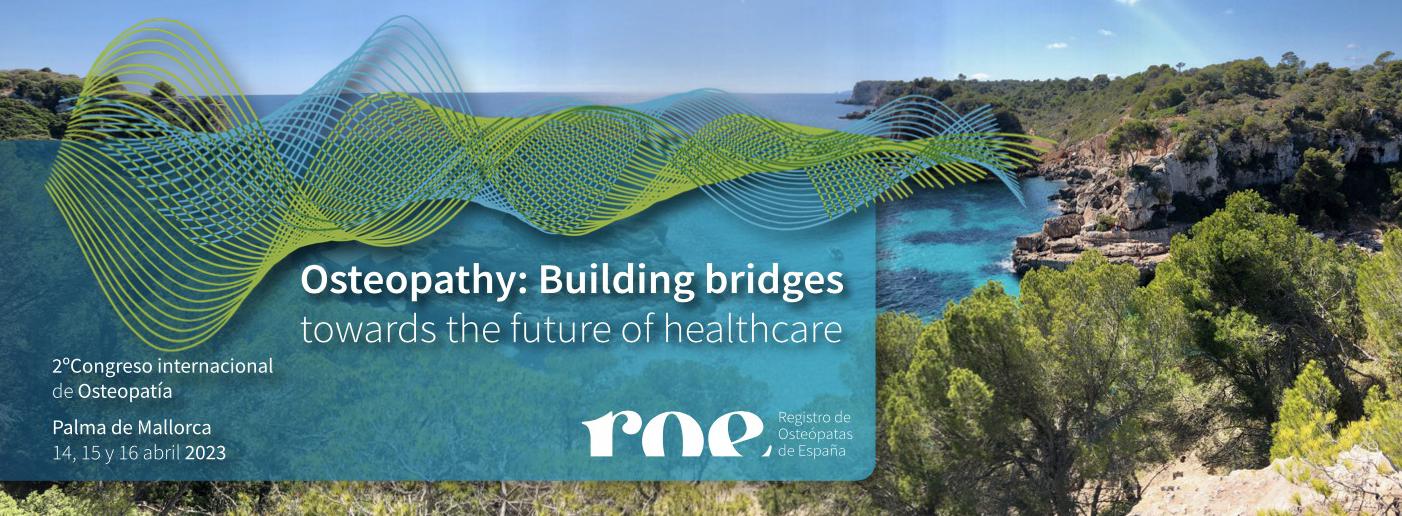
A combination of keynote speakers and debate forum: in Mallorca you’ll find a spectacular setting for an exceptional event with an amazing line-up of speakers including: G. Fryer PhD (AUS), S. Vogel PhD (UK), C. Morin PhD (CAN ), P. Vaucher PhD (SUI), G. Álvarez PhD (ESP), F. Cerritelli PhD (ITA), Dr.V. Namer (CAN), G. Roncada (BEL), R. Cases PhD student (ESP), J. Draper-Rodi PhD (FRA), H. Mansfield MSc (UK) and R. Shaw PhD (UK).
At ROE2023 the latest advances in our field will be presented, with a clear focus on the possibilities of including Osteopathy as a therapeutic approach to healthcare. To achieve this, we have prepared a seafront environment that encourages debate and exchange of views between the presenters and the audience.
ROE 2023 is a meeting point for osteopaths to promote the professional development, enhance networking, dissemination of research, and above all, to debate about the practice of Osteopathy within the multidisciplinary healthcare environment.
Full Pass (450€) includes Full Access to #ROE2023 and to all keynote presentations and panels. Also includes 2 meals (Friday and Saturday) and all coffee breaks at the venue facilities. Please check at our website for other Pass options (including streaming or student price)
In addition to the academic programme, other activities such as wine tasting, paddle surfing and a guided tour of Palma are also planned. Further information at www.osteopatas.org
Venue: Hotel Santos Nixe Palace 5* (Palma) Don’t miss the opportunity: #ROE2023 Mallorca Rocks!!!

www.osteopati.org 11
ROE2023 International Conference:
Nok en fagdag gjennomført
Nok en spennende fagdag ble gjennomført i Høyskolen Kristianias flotte lokaler. Høstens fagdag gikk av stabelen lørdag 22. oktober og på agendaen var det godt og blandet.
Det var godt oppmøte av våre medlemmer, og det er gledelig å se at så mange nyutdannede osteopater og studenter tar turen. Det ble flere gode pausesamtaler underveis og mange muligheter til å stifte nye bekjentskaper.

Porteføljeforvalterne Mette Helen Brobakke Borhaug og Sanja Maric fra Norsk Pasientskadeerstatning (NPE) tok oss gjennom tilskuddsordningen for privat helsetjenesten. Vi fikk en god gjennomgang i beregning av tilskuddssatser og årsverk, meldeplikt og konsekvens av å ikke overholde melde- og tilskuddsplikten. Det ble også presentert enkeltsak eksempler fra kiropraktor og fysioterapeutbehandlinger for å gi oss et innblikk i erstatningsnivå. Dette var virkelig nyttig informasjon for oss i forbindelse med autorisasjon og den kollektive ansvarsforsikringen vi har gjennom NPE.
Vi fikk også besøk av Ryggforeningen med styreleder Normann Støylen og Eli Steen. De introduserte oss for deres visjon; “Vi skal få ryggpasientene til å rette ryggen”. Videre kom de med innspill på hva de tenkte osteopater kan bidra med inn mot deres medlemmer. De oppfordret til å ta kontakt med de lokale foreningene, stille på medlemsmøter og informere om hvem osteopaten er og hva slags tilbud som kan være aktuelt inn mot de ulike målgruppene.
Første kullet fra videreutdanningen i idrettsmedisin ble uteksaminert denne våren. Vi fikk presentert to spennende caserapporter derfra. Jan-Andreas Fosnæs introduserte oss for rehabilitering av håndballspiller med ankelovertråkk og Kristian Eikvar presenterte en idrettsosteopatisk rehabilitering av en ung alpinist med ACLR og tibiamargnagle.


Martin Stav Engedahl avsluttet dagen med teamet “osteopati og idrettsmedisin - en naturlig del av teamet”. Her ble det rom for refleksjon rundt osteopatens rolle som helsepersonell i et idrettsmedisinsk perspektiv og Martin tok oss gjennom fire hovedområder hvor osteopaten kan hjelpe utøveren: forebygging, rehabilitering, restitusjon og prestasjon.

Det er som alltid hyggelig å møte gode kollegaer på en arena som dette, og det er inspirerende å se at den faglige interessen er stor.
Takk for en strålende fagdag!
Åsen Asphaug Osteopat
12 Nordic Osteopathic Journal
Hanna
Text: Hanna Åsen Asphaug
Et
journalsystem utviklet i Seljord i tett samarbeid med norske behandlere. Smarte løsninger for NHN og forsikringsoppgjør. Designet for å gjøre din arbeidsdag enklere.
Ønsker du å vite mer om Physica? - Ta kontakt for et tilpasset tilbud for deg som er osteopat.

Kontakt oss i dag: Telefon: 35 05 79 10 E-post: post@physica.no Chat: www.aspit.no
Les mer på aspit.no
www.osteopati.org 13
Safety in cervical spine manipulation
 Text: Andreas Sønderriis
Text: Andreas Sønderriis
Media attention in Denmark
In Denmark there has recently been a focus on the safety aspect of cervical manipulation. A series of articles was published in Danish newspapers telling the stories of patients who had experienced serious adverse events in the form of cervical vascular injury after having undergone chiropractic manipulative therapy. This has created a lot of attention not just among chiropractors and chiropractic patients but also among professions like physiotherapist and osteopaths that also perform spinal manipulative therapy (SMT). This has led to the question, what do we currently know about the safety of cervical manipulation.
Spinal manipulative therapy
According to the International Federation of Orthopedic Manipulative Physical Therapists manipulation can be defined as a passive, high velocity, low amplitude thrust applied to a joint complex within its anatomical limit with the intent to restore optimal motion, function, and/or to reduce pain [1]. SMT are frequently used in the Osteopathic treatment of patients with neck pain and headache disorders [2]. This article is focused on SMT even though both osteopaths and chiropractors use a wide range of manual treatment techniques such as soft-tissue techniques, joint mobilization, and joint manipulation.
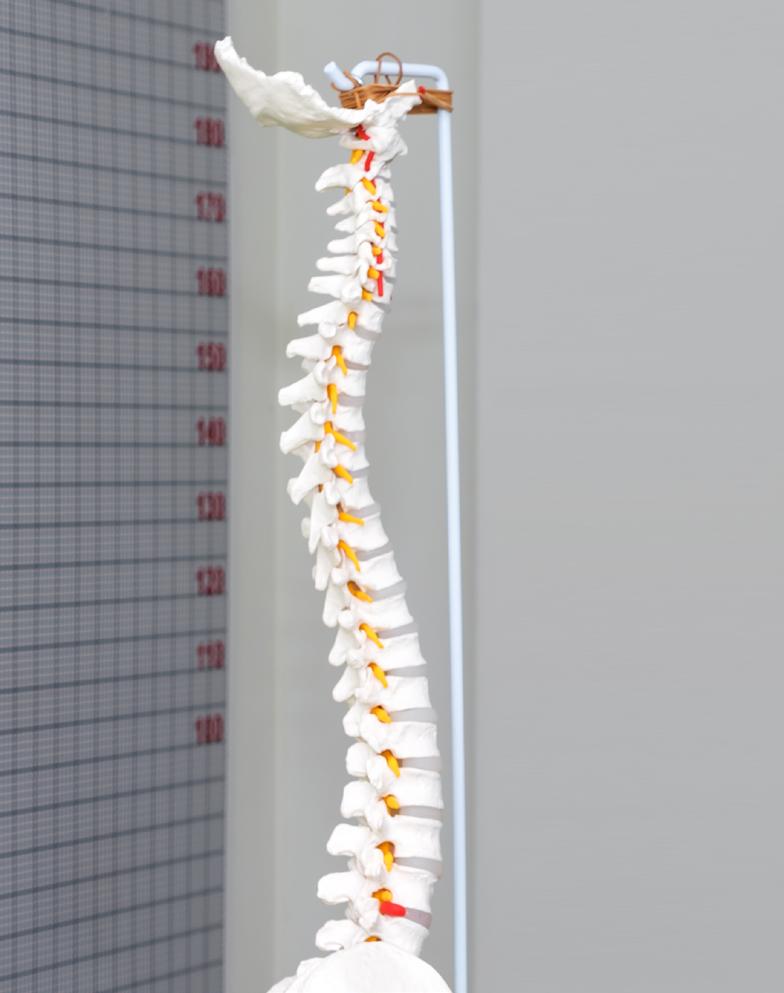
Adverse events after spinal manipulative therapy
SMT associated adverse events has been described in the literature as far back as 1907 [2] and are normally divided into mild, moderate, and major or serious adverse events (SAE)[3]. SMT associated SAE are quite rare and covers different pathologies such as cervical artery dissection, stroke, spinal cord injury, fracture, other damage to the cervical structures and death. The symptoms of SAE are normally medium to long in duration with a moderate to severe intensity. For the patient the SAE symptoms are unacceptable with severe functional impairment and often require further treatment. Moderate adverse events are medium to long term in duration and have the same symptoms as SAE but with a moderate intensity and severity. Mild adverse events are common and are often experienced by the patient as short term, mild and non-serious symptoms such as muscle soreness, light dizziness, and a feeling of being tired. Normally no treatment is required for mild adverse events. [1], [3].
Reversed causality in understanding risk
There has been much debate to whether cervical SMT is safe or not. SAE such as dissection of the cervical arteries are associated with cervical SMT, but several studies suggest that the associations is likely to be the result of reversed causality. A scientific study from 2017 concluded, that the “Associations between primary care physicians and chiropractic visits and stroke were similar and likely due to patients with early dissection-related symptoms seeking care prior to developing their strokes” [4]. The problem is determining whether the treatment is harmful or if there is an underlying pathology which is subsequently aggravated by treatment [1], [4], [5].
Risk in treatment
Osteopathic practitioners rarely come across
cervical vascular pathologies, but the fact that these pathologies often present them self with symptoms such as neck pain and headache that are similar to musculoskeletal disorders makes distinguishing between the two conditions important for the Osteopath in the patient assessment [2], [6].
Patients suffering from cervical pain disorders are very common. In 2017 neck pain had a global age standardized incidence of 806,6 per 100.000 and a prevalence of 3.551,1 per 100.000, with Norway (6.151,2), Finland (5.750,3) and Denmark (5.316) having the highest age standardized prevalence [7]. Headache disorders are also common conditions with a global prevalence of 52% of the population [8]. The high prevalence of both neck pain and headache disorders can explain why Osteopathic practitioners regularly treat these conditions.
14 Nordic Osteopathic Journal
“What do we currently know about the safety of cervical manipulation.”
A study covering SMT safety from 2017 found that the estimates of incidence for SAE risk after having had cervical SMT was heterogenous because of the variation of techniques, dosage and intervention descriptions in the included trials and reviews. 46 % of the included reviews found that cervical SMT was safe, 42% were neutral and 12% found it to be dangerous. In the study, the incidence of SAE are divided in pathologies [9]:
• Death: 1 per 3.330.000-3.730.000 manipulations
• Stroke: 1 per 20.000-2.000.000 manipulations
• Vertebrobasilar accident (VBA): 1 per 228.050-1.000.000 manipulations
• Cerebrovascular accident (CVA): 1 per 228.050-3.850.000 manipulations
According to national statistics from 2017 the global median age-standardized prevalence of stroke was 1.276 per 100.000 [10]. According to the IFOMPT framework from 2020 the rate of vertebral artery dissections in the general population is estimated to be 0.75 – 2.9 per 100.000, the prevalence of a stroke (VBA) after having received osteopathic manual therapy is 0,79 per 100.000, with an absolute risk of 0,005% [1].
The relatively low risk of SAE correlates with the findings of a new study regarding efficacy and safety of Osteopathic manipulative treatment. The study concludes that among the included systematic reviews and meta-analysis no serious adverse effects were reported [11].
How can we avoid injuries
The focus of the osteopath in preventing SAE should be identifying risk factors and symptoms of cervical vascular pathology in the anamnesis and examination. There are almost always multiple causal factors that create the cervical vascular pathological event. Some of the known risk factors are smoking, high blood pressure, high cholesterol, recent trauma, and vascular abnormalities. The typical symptoms are headache, progressing neck pain, visual disturbance, dizziness, and upper limb paresthesia. Clinical signs can be speech difficulties, ptosis, facial palsy, unsteadiness, drowsiness, confusion, vomiting, swallowing difficulties and episodes with loss of consciousness. Performing a neurological examination of the cranial and relevant peripheral nerves, testing blood pressure, coordination, balance, and gait is an important part of the diagnostic process. If the osteopath suspects an underlying cervical vascular pathology the next step should be to refer the patient for further vascular investigation. This often includes duplex ultrasound, MRI, arteriography, and computed tomography [1].
Since 1927 therapist across professions has been using functional positional testing to rule out any underlying cervical vascular pathology. Often the tests have been combinations of cervical side bend, rotation, and extension with the aim of limiting the blood flow in the cervical arteries and thereby exposing any abnormalities or pathologies. The problem with this approach is the sensitivity of the test which is very low (0-57%). Using functional positional testing as a safety test
to rule out an underlying problem can create a false sense of security, with the risk of treating a patient, who has an contradictory pathology and thereby creating an SAE [12].
What are we obliged to do?
Patient centered communication is essential in the osteopathic practice and helps build the therapeutic alliance between the practitioner and the patient. Communicating the risk of adverse events in cervical SMT creates the foundation for shared decision making and the osteopath should take into consideration the patients degree of health literacy and understanding of the situation [13].
In Denmark, as well as many other countries, osteopaths are required by law to inform the patient of potential risks of AE and obtain informed consent before performing SMT. The informed consent should be noted in the patients’ medical record [14].
For more information please visit www.ifompt.org.
References:
[1] A. Rushton et al., “International Framework for Examination of the Cervical Region for potential of vascular pathologies of the neck prior to Orthopaedic Manual Therapy (OMT) Intervention: International IFOMPT Cervical Framework,” 2020, Accessed: Jul. 28, 2022. [Online]. Available: www.ifompt.org.
[2] H. A. Kranenburg, M. A. Schmitt, E. J. Puentedura, G. J. Luijckx, and C. P. van der Schans, “Adverse events associated with the use of cervical spine manipulation or mobilization and patient characteristics: A systematic review,” Musculoskelet. Sci. Pract., vol. 28, pp. 32–38, Apr. 2017, doi: 10.1016/J.MSKSP.2017.01.008.
[3] D. Carnes, B. Mullinger, and M. Underwood, “Defining adverse events in manual therapies: A modified Delphi consensus study,” Man. Ther., vol. 15, no. 1, pp. 2–6, Feb. 2010, doi: 10.1016/J. MATH.2009.02.003.
[4] J. D. Cassidy, E. Boyle, P. Côté, S. Hogg-Johnson, S. J. Bondy, and S. Haldeman, “Risk of Carotid Stroke after Chiropractic Care: A Population-Based Case-Crossover Study,” J. Stroke Cerebrovasc. Dis., vol. 26, no. 4, pp. 842–850, Apr. 2017, doi: 10.1016/J.JSTROKECEREBROVASDIS.2016.10.031.
[5] E. W. Church, E. P. Sieg, O. Zalatimo, N. S. Hussain, M. Glantz, and R. E. Harbaugh, “Systematic Review and Meta-analysis of Chiropractic Care and Cervical Artery Dissection: No Evidence for Causation,” Cureus, vol. 8, no. 2, Feb. 2016, doi: 10.7759/CUREUS.498.
[6] D. R. Murphy, “Current understanding of the relationship between cervical manipulation and stroke: what does it mean for the chiropractic profession?,” 2010. doi: 10.1186/17461340-18-22.
[7] S. Safiri et al., “Global, regional, and national burden of neck pain in the general population, 1990-2017: systematic analysis of the Global Burden of Disease Study 2017,” BMJ, vol. 368, Mar. 2020, doi: 10.1136/BMJ.M791.
[8] L. J. Stovner, K. Hagen, M. Linde, and T. J. Steiner, “The global prevalence of headache: an update, with analysis of the influences of methodological factors on prevalence estimates,” J. Headache Pain, vol. 23, no. 1, pp. 1–17, Dec. 2022, doi: 10.1186/S10194-022-01402-2/ TABLES/7.
[9] S. M. Nielsen, S. Tarp, R. Christensen, H. Bliddal, L. Klokker, and M. Henriksen, “The risk associated with spinal manipulation: an overview of reviews,” 2017, doi: 10.1186/s13643-017-0458-y.
[10] A. Timmis et al., “European Society of Cardiology: Cardiovascular Disease Statistics 2019,” Eur. Heart J., vol. 41, no. 1, pp. 12–85, Jan. 2020, doi: 10.1093/EURHEARTJ/EHZ859.
[11] D. Bagagiolo, R. Debora, and F. Borrelli, “Efficacy and safety of osteopathic manipulative treatment: an overview of systematic reviews.,” BMJ Open, vol. 12, no. 4, p. e053468, Apr. 2022, doi: 10.1136/BMJOPEN-2021-053468.
[12] N. Hutting, H. A. “Rik” Kranenburg, and R. Kerry, “Yes, we should abandon pre-treatment positional testing of the cervical spine,” Musculoskelet. Sci. Pract., vol. 49, Oct. 2020, doi: 10.1016/J.MSKSP.2020.102181.
[13] M. B. Reed and O. P. Thomson, “‘Who am I to disagree?’ A qualitative study of how patients interpret the consent process prior to manual therapy of the cervical spine,” Int. J. Osteopath. Med., vol. 40, pp. 4–13, Jun. 2021, doi: 10.1016/J.IJOSM.2021.03.006.
[14] Sundhedsministeriet, “Journalføringsbekendtgørelsen,” BEK nr 1225 af 08/06/2021, 2021. https://www.retsinformation.dk/eli/ lta/2021/1225 (accessed Aug. 17, 2022).
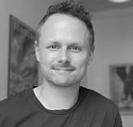
www.osteopati.org 15
Andreas Sønderriis
Authorized Osteopath, Writer for the Danish Osteopathic Society and Member of Osteopathy Europe Research Committee
The use of artificial intelligence and sensor devices in an osteopathic practice
Text: Eivind Møller
Does artificial intelligence (AI) digital sensor feedback, and other electronic devices have a role to play in the osteopathic profession.
Originating from a body-mind-spirit base and moving into a biopsychosocial and person-centred approach, it could be debatable! And the answer probably is, it depends! In this article I will look on how we use modern tools like cameras and sensors at our clinic, present a few thoughts on gait and running mechanisms, and finally present a specific case from the clinic where these tools and assessments were done.
The tools
Up until recently being able to make a test lab at your clinic, that could to create valid and robust data was very expensive.
Gas-analysers, Pressure platforms, advanced treadmills and bikes, full Hi-Speed camera setup in most cases typically needed a special laboratory facility and persons who had specialised skills and understandings of outcome data to evaluate performance or kinematic features.
Persons given these tests were typically test persons in relation to scientific studies at universities, or athletes in national elite associations or environments.
With the technological advances in the later years, platforms like iPhone and iPads have significantly increased the accessibility to provide valid and constructive feedback on a much more accessible scale.
Our experience is that especially recreational runners, hikers, and bikers traditionally are very interested in tests and analyses of motion and kinematics and for whom it probably also is best possible to transform these data into actions.
One of the best tools in relation to video capturing is the iPhone and iPad with their slow-motion features in their camera settings. The camera itself is often sufficient, but apps like Onform®, improves feedback on running patterns and positions that both the recreational as well as the elite runner can benefit from.
Video though has its limitations, as it only gives an “external” look at how the body moves and positions. Attack angles of the foot strike, total gait pathways, actual load distribution and similar values can be difficult to identify with video alone.
These features are mostly measured on dynamic pressure platforms.
The dynamic pressure platform is a great tool, but also has its limitations. The analysis shows the relation between the shoe, or foot to the ground, and not what is going on in the relation between the foot and the shoe. Furthermore, the clinical setting with pressure platforms can be argued to affect running technique or performances.
Digitsole Pro® is a product that tries to bridge that barrier, or limitation with the traditional pressure platform.
The product is a sensor sole which measures several kinetic measures, and with AI technology gives valid and repeatable data in gait and running analysis[2]
The product is a soft insole that replaces the original insole in the shoe that the test person wears. With Bluetooth technology it is possible to make very close to unbiased data samples.
In the bottom of the insole is a pocket for placing the sensor chip that measures the kinematic and spatio-temporal forces of the gait or running. See picture 1. For visual on the product.[3]
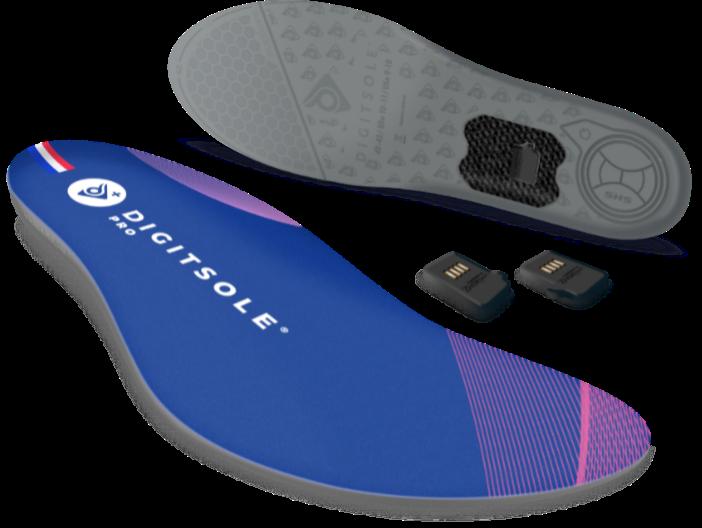
Mechanisms of performance and injury in running
Barnes and kidding[4] reviewed measurement, norms and determining factors influencing on running economy and concluded, that despite quit easy to measure, running economy and hereby the performance ability is a very complex multifactorial concept consisting of a deep integration of e.g. physiological, neurological, biomechanical compounds that work together within the individual runner. The factors involved is described in figure 1.
Figure 1. Running economy: measurement, norms, and determining factors, Kyle Barnes & Andrew Kilding. [4]

16 Nordic Osteopathic Journal
Picture 1. Digitsole Pro® [3]
Running economy is based on the interconnection within systems and between the whole system, Barnes and kidding describes a physiologic/biomechanical/neurological holistic approach to understanding or describing the factors affecting running performance. The same systems or factors, their relation and interaction are for a great part the same when we are trying to tackle and understand mechanisms behind running related injuries. Bertelsen et al. published in 2017 a framework for the aetiology of running related injuries. [5]
The framework is described in figure 2. and shows how several aspects as previous training, sleep, diet, restitution, running style, body weight, shoes etc. influences the body´s structural capacity. When accumulated and in the situation where these factors exceed the structure-specific load capacity of a structure or structural area of the runners’ body, it potentially can lead to a running related injury. Figure 2.: A framework for the aetiology of running injuries, M. Bertelsen et al.[5]
Shoes, running styles and mechanics
Running shoes
It has yet to be clarified how the effect of a shoe influences the factors of running. Especially the relation between shoe types, and risk of running related injuries are often debated.
Despite manufacturers arguing that their shoes are capable of e.g., reducing risk of injuries related to running, research has shown little to no effect on e.g. pronation controlled shoe and the prevalence of running related injuries in novice runners [6] recent research though has revealed that specific motion related injuries, can be reduced by using motion controlling shoes [7], [8]
Running style
Often discussed in relation to running related injury risk, is the running style and especially the strike pattern.
For some time, it was believed that midfoot or forefoot landing overall reduced risk of running related injuries and even potentially could increase performance. Research though has not been able to find any effects that could argue to favour one running style or strike pattern to another both in relation to risk of injury and performance.
However mechanical forces, stressors and moving patterns that differs from one running style to another has been identified. Midfoot to forefoot landing style reduces kinematic forces to the knee and hip regions but increases the demands to the ankle region. On the opposite, classical heel strike reduces load to the foot, but has a higher amount of load to the knee and proximal joints.[9], [10]
Propulsion
To redistribute and return energy from landing into propulsion, is a key factor both in relation to performance and risk of injury
The best way to navigate in this perspective is the cadence. It appears that having an increased cadence hence reduced stride length, is reducing several biomechanical key factors that are also associated with running related injuries. [11]
The typical recommended cadence is 170-180 steps per minute but is always individually assessed and must fit with the individual runners’ capacities both physical and technical. Keeping in mind the framework of Bertelsen et al. [5] and the factors on running economy described by Barnes and Kidding [4] it can be argued that despite there does not exist a “correct” way of running external forces and stressors related to a specific running and landing style, together with understanding of mechanisms behind the interactions of the different systems, can be useful in the assessment of the individual runner.
The case of Lone – a marathon runner Lone visited us at the clinic, as she was suffering different issues in relation to her running. Her primary objective was running long distances up to marathon, and at first visit she was in the early preparation for a full marathon in 7-8 months’ time
Issues were around the right thigh and left knee. Especially the left knee was a source for irritation and holding back the progress in training.
During the clinical examination few mechanical flaws and only minor restrictions of functional character around the lumbopelvic
region, hips, lower extremities, and feet were found.
Therefore, a broader investigation and intervention plan was defined.
A running analysis with hi-speed video and Digitsole Pro® measuring insoles was performed.
The numerical values of the running analysis are presented in table 1.
The aim was to detect whether we could identify discrepancies or patterns in running style or loading, that could be argued to have influence or relation as a confounding factor for the issues around the left knee and right hamstrings.
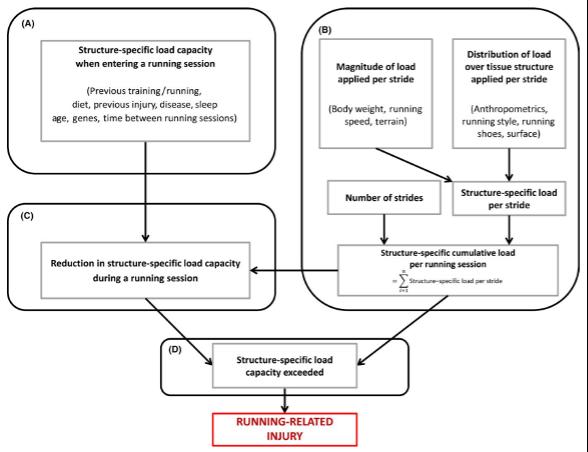
In the initial analysis on October 14, 2021, (table 1.) we did the analysis with the shoes that Lone used at that time for her running, a pair of Asics Gel Kayano version 26.
This shoe is known for its stabile capabilities with a high level of cushioning, movement guidance and has a heel-drop of 10 mm. Heel-drop is the difference in height between the heel and forefoot area of the shoe – (in this case the heel is 10 mm higher than the forefoot.)
A running shoe with a high heel-drop typically favours a heel strike running style.
In table 1. three key areas, star-marked, are of interest to Lones case.
• A relative high attack angle and a clear heel strike pattern
• An acceptable but to the low-end cadence
• A high attack duration, meaning a relative long period of the ground contact time is used on landing and not propulsion relatively.
www.osteopati.org 17
The clinical examination and assessment, the three specific key indicators, including the video analysis gave us a framework for adaptation and improvements regarding Lones running mechanics. This was believed would improve and optimize her running strategy, hence giving her less injuries or irritations from the knee and thigh.
The plan consisted of following primary targets
• Shift of shoes to a lower drop, which favours a lower attack angle on landing.
• Increase running cadence.
• Strengthen lumbopelvic area including focus on stability and balance in the relation to the lower extremity.
• Balancing overall training load in the intervention period.
The timeline was set to 4-5 months, which gave us sufficient time to adapt to the changes and prepare physiologically afterwards for the marathon in 8-month time.
During the intervention period we had one follow up measurement which indicated that we were on the right track.
On the right side of table 1. It is possible to see the changes at the final test in end February 2022.
We succeeded with
• Increasing cadence from 168 steps to 178 steps per minute
• Lowered the attack angle on landing from around 16-18o to 11-12o
• Decreased attack duration
• Increased propulsion duration
Lone managed to change her running style and most important of all reduce her pains and problems from both the left knee and right thigh to a level where it had no negative influence on her running performance. This we believe was achieved with the approach of focusing on shortening the stride, increasing the cadence, change of footwear to a zero-drop shoe (Altra Paradigm 6), supported by focused strength, stability, and balance exercises .
Table 1. Comparison of the initial measurement on October 14, 2021, and the control measurement on February 28, 2022
Final thoughts
Would we have been able to structure such a plan for Lone, without cameras and digital sensors and AI technology? Yes probably! But the use of the electronic tools and the visual feedback it created, was a strong supportive and didactical tool for me as a therapist and Lone as client! both in the immediate analysis, throughout the process and showing the result of the overall intervention at the end.
This process confirmed both Lones own experience, visualized the changes and confirmed the successful process as Lone improved her situation, making it possible for her to perform well at the marathon in the end.


So, YES in my opinion artificial intelligence (AI) digital sensor feedback and other high pitch electronic devices can have a role to play in the future osteopathic profession! In the right context and relation to the client and their needs.
Biography Eivind Møller
Physiotherapist and Osteopath MSc. in manual threapy´s effect on factors related to running economy and performance
Cofounder of a multi-diciplinary clinic in Copenhagen, Denmark
Disclaimer
Eivind Møller Physiotherapist and Osteopath MSc.

I act as an external consultant for the company Digitsole Pro®, lecturing on global webinars on my experiences with the Digitsole Pro. I am unpaid for this role but have free access to the product in the clinic. For any questions to the product Digitsole Pro® please visit www.digitsolepro.com or email me on eivind@klinik.dk.
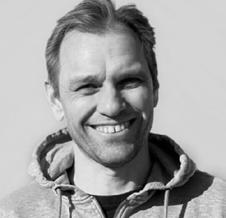
18 Nordic Osteopathic Journal
References:
[1] Digitsole Pro : Analyze your patients’ gait and running. https://www.digitsolepro.com/. -
[2] LOUKOVITIS, ANDREAS ; ZIAGKAS, EFTHYMIOS ; ZEKAKOS, DIMITRIOS XYPOLIAS ; PETRELIS, ALEXANDROS ; GROUIOS, GEORGE: Test-Retest Reliability of PODOSmart® Gait Analysis Insoles. In: Sensors Bd. 21, Multidisciplinary Digital Publishing Institute (2021), Nr. 22, S. 7532
[3] 2 chips & 6 pairs of soles connecting to an online interface. https://www.digitsolepro.com/ product.
[4] BARNES, KYLE R ; KILDING, ANDREW E: Running economy: measurement, norms, and determining factors. In: Sports Medicine - Open Bd. 1:8 (2015)
[5] BERTELSEN, M. L. ; HULME, A. ; PETERSEN, J. ; BRUND, R. K. ; SØRENSEN, H. ; FINCH, C. F. ; PARNER, E. T. ; NIELSEN, R. O.: A framework for the etiology of running-related injuries. In:
Scandinavian Journal of Medicine & Science in Sports Bd. 27 (2017), Nr. 11, S. 1170–1180
[6] NIELSEN, RASMUS OESTERGAARD ; BUIST, IDA ; PARNER, ERIK THORLUND ; NOHR, ELLEN AAGAARD ; SØRENSEN, HENRIK ; LIND, MARTIN ; RASMUSSEN, STEN: Foot pronation is not associated with increased injury risk in novice runners wearing a neutral shoe: a 1-year prospective cohort study. In: British Journal of Sports Medicine Bd. 48, BMJ Publishing Group Ltd and British Association of Sport and Exercise Medicine (2014), Nr. 6, S. 440–447
[7] MALISOUX, LAURENT ; CHAMBON, NICOLAS ; DELATTRE, NICOLAS GUEGUEN, NILS ; URHAUSEN, AXEL ; THEISEN, DANIEL: Injury risk in runners using standard or motion control shoes: a randomised controlled trial with participant and assessor blinding. In: Br J Sports Med Bd. 50 (2016), Nr. 8, S. 481–487
[8] WILLEMS, TINE MARIEKE ; LEY, CHRISTOPHE ; GOETGHEBEUR, ELS ; THEISEN, DANIEL ; MALISOUX, LAURENT: Motion-Control Shoes Reduce the Risk of Pronation-Related Pathol-
Osteopatiakoulu Atlas
Update: evolving osteopathic education
Text: Tiina Lehmuskoski
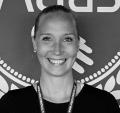
Courseinformation:
February 2nd-3rd 2023: Thu: The Lymphatics Theory and Practical Fri: The Neurolymphatics: system and disorders. Anatomy, physiology, applied pathology. Diagnosis of ME/CFS; Fibromyalgia and Long-COVID.
Price: 390€
Finnish osteopathy school Osteopatiakoulu Atlas started to challenge its thinking to make sure its education is constantly evolving.
Raymond Perrin, DO (UK), Ph.D. Registered Osteopath

Neuroscientist and Specialist in Chronic Fatigue Syndrome/ME.
Hon. Clinical Research Fellow, Faculty of Biology, Medicine and Health, The University of Manchester. Manchester, UK
Hon. Senior lecturer – Allied Health Professions Research Unit, The University of Central Lancashire, Preston, UK.
Vice Patron – University College of Osteopathy, London
Participants: Osteopaths and 4th-year students Place: Finland, Espoo
ogies in Recreational Runners: A Secondary Analysis of a Randomized Controlled Trial. In: The Journal of Orthopaedic and Sports Physical Therapy Bd. 51 (2021), Nr. 3, S. 135–143
[9] GOSS, DONALD LEE GROSS, MICHAEL T.: A Comparison of Negative Joint Work and Vertical Ground Reaction Force Loading Rates in Chi Runners and Rearfoot-Striking Runners. In: Journal of Orthopaedic & Sports Physical Therapy Bd. 43 (2013), Nr. 10, S. 685–692
[10] ARENDSE, REGAN E. ; NOAKES, TIMOTHY D. ; AZEVEDO, LIANE B. ; ROMANOV, NICHOLAS ; SCHWELLNUS, MARTIN P. ; FLETCHER, GRAHAM: Reduced Eccentric Loading of the Knee with the Pose Running Method. In: Medicine & Science in Sports & Exercise Bd. 36 (2004), Nr. 2, S. 272–277
[11] SCHUBERT, AMY G. ; KEMPF, JENNY ; HEIDERSCHEIT, BRYAN C.: Influence of stride frequency and length on running mechanics: a systematic review. In: Sports Health Bd. 6 (2014), Nr. 3, S. 210–217
The leading idea was to make sure that the future osteopaths are ready to face the challenges of life today and the common contemporary diagnoses.
The direction of the school took a deep look at the world we live in and the demands we face as healthcare personnel. Several subjects that have previously been receiving less attention or have been neglected were adressed, such as:
- osteopaths’ skills for self-reflection used as a recovery tool for themselves - the identity as an osteopath while operating as an entrepreneur - knowledge and skills on the common diagnoses of today such as Chronic fatigue syndrome or Long-COVID.
February 5th 2023: Sun: The Neurolymphatics: Practical
Price: 199€ Participants: Osteopaths and 4th-year students Place: Finland, Espoo
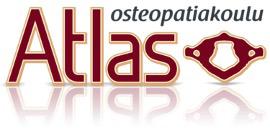
Questions? Please feel free to contact: toimisto@osteopatiakoulu.fi
Sometimes developments happen slowly, but when the time is right things can progress smoothly and fast. We are happy to say that all the fore mentioned subjects are now covered in Atlas.
Some subjects are very relevant and interesting for graduate osteopaths as well, so Atlas is arranging teaching on neuro-lymphatics and on general lymphatics as a postgraduate course in February 2023 by Raymond Perrin. Subjects covered will be chronic fatigue syndrome, Long-COVID, and fibromyalgia. These are conditions that challenge osteopaths, are states that are often misdiagnosed and are situations that leave patients alone with their symptoms.
Tiina Lehmuskoski Principal Osteopatiakoulu Atlas
www.osteopati.org 19
The
second
year of the Master’s
Degree Programme at
Metropolia University of Applied Sciences - a brief report
Text: Laura Lee Kamppila
September 2021 saw the start of a brand new programme for osteopathy in Finland. As the first master’s degree in the Nordics in osteopathy, we embarked on a journey of firsts together with 17 brave and enthusiastic students from all over Europe.
The aim of the project is clear: it is designed to provide a springboard for osteopaths in gaining the skills needed to engage in the fields of research, education, business development and societal or political engagement, depending on their own specific interests.
Clinical aspect:
Exploring explanations for osteopathic treatment effects within an evidence-informed and critical thinking perspective, and advanced practitioner skills.
Research aspect:
Building a constructive forum for open inquiry, discussion and development through expanding knowledge on research methods and skills and creating a master’s thesis.
This collaboration with the HBM is further supported by embedding an evidence-informed practice approach throughout the programme. The rationale here is that there is a necessity for the osteopathic profession to reflect upon its theoretical models and integrate the most recent and relevant research.
The second academic year of the 2-year course has just started, and the first group is working hard to graduate in the beginning of the summer 2023. At the same time Metropolia is starting the preparations for the second group of students. Selection process will start in January and will be completed by the summer. The Second group of master’s students will be starting their studies in September 2023.
Having all the courses taught on-line pre-
We work together with another master’s programme, Master’s in Health Business Management (HBM). This multidisciplinary approach is a core aspect for us as this collaboration encourages and supports communication between healthcare professionals raising awareness of osteopathic practice across healthcare in general.
The larger aim is to contribute to developing a stronger professional identity and to raise awareness of osteopathic healthcare within society by helping students to develop their

own synthesis of the contemporary osteopathic topics. The original curriculum was developed by two schools – Skandinaviska Osteopathögskolan from Gothenburg, Sweden and Metropolia University of Applied Sciences from Helsinki, Finland. While we have been running the programme for the first time, small changes have been made for practical reasons. At a time when person-centered health care is a central tenet of modern-day health management, it is important that the osteopathic profession takes its place in contributing in an active and positive manner.
sents many opportunities. The nature of e-learning learning was considered already during the selection of students. In addition to testing the language skills and previous knowledge on osteopathy, the candidates were participated in group interviews and discussions. Students report that the group does have a real sense of unity and camaraderie that has developed via screen, chats, digital platforms, and on-line seminars. We believe that the selection process and the thorough
orientation gave a good start for working together. Main credit for the group spirit goes to the group itself of course.
The group is very special. Judging by the ambitious spirit of the group it seems like there are some PhD’s in the making in this group. The school wants to offer a constructive forum for open inquiry, discussion, and development of novel theoretical constructs. In order to reach this goal, a group needs to
20 Nordic Osteopathic Journal
Photo: Marjaana Malkamäki/Metropolia University of Applied Sciences
be tuned in to the same ideals. Looking from the outside, a system of support and collaboration between the students is evident. The programme is considered interesting and very current, but it is time consuming and demanding. All of the students are practicing clinicians as well, some involved in teaching and many having families or dear ones to take care of. Going through a journey such as these studies is not evident, but the fact that it is perceived as very rewarding keeps the scales in balance.
The lecturers that have been able to join us have been truly inspiring. We have had the good fortune to have very current speakers that are active in the field of research, publishing actively, doing clinical work and lecturing. Working around subjects from the osteopathic part of the programme such as Pain Science in Osteopathic Practice by Jorge Esteves and Hazel Mansfield, Psycho-motional Aspects in Osteopathic Professional Practice by Robert Shaw, and Neuroscience related to Osteopathy by Robert Shaw and Hazel Mansfield has increased the students’ knowledge in a very valuable way. Courses on both quantitative and qualitative research are at the core of the curriculum, taught by Eija Metsälä and Tricia Cleland Silva from Metropolia and together with Jerry Draper-Rodi and Oliver Thomson. A breathtaking collection of expertise.
From the start of the studies there is a strong
emphasis on developing good competence in research and development. These competences are supported throughout and culminate in a Master’s Thesis. This significant piece of work is focused on the interests of the students and is a very rewarding part of the programme. Each student is supervised by two thesis supervisors: one from the Metropolia corps of teachers and another from the field of osteopathy. The students are allowed to suggest supervisors as well. All the supervisors have completed their doctorate thesis either in the field of health care or osteopathy.
We aim to recognize and address the key competences required by the contemporary osteopath who wants to work within an integrative health care system. that supports the process of exploring and critically reflecting

on osteopathy from an evidence-informed perspective.
The last tweaks for the curriculum for the group starting in September 2023 are being finalized as this text is being written. We are already eagerly looking forward to meeting the group number two. We are happy, that together we will be shaping the future of osteopathy.
Laura Lee Kamppila Head of programme, Master’s degree programme in Osteopathy

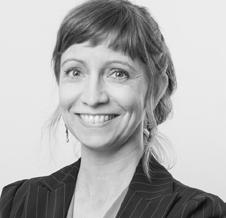
www.osteopati.org 21
“Having all the courses taught online presents many opportunities. The nature of e-learning was considered already during the selection of students. ”
Digest from the OsEAN’s 8th “Open Forum for Osteopathic Education” conference
Text: Hakim Mhadhbi
Working across borders in an international context undoubtedly enriches the profession. This applies for the whole community, very much including the future osteopaths, the students.
This text is a peak at the Osteopathic European Academic Network’s event in October this year. The first class of the Master’s degree programme in Osteopathy from the Metropolia University of Applied Sciences (Helsinki, Finland) was represented at OsEAN’s 8th “Open Forum for Osteopathic Education” conference. This conference was held in Antwerp, Belgium on the 29th and 30th of September 2022.. The topic of the conference was “Teaching Clinical Competencies”. Clinical training is indeed a core aspect of osteopathic programmes. Clinical practice allows students to put themselves in genuine care situations and to apply the practical and theoretical knowledge acquired during their curriculum. The acquisition of clinical competencies is a challenge for training future osteopaths throughout Europe. It involves various components, including:
• A professional working environment.
• Active learners for their training.
• Guiding osteopaths for learners through practice.
• Patients whose trust enables the learning process to take place, as well as legislation setting out the framework for osteopathic interventions (to protect patients by ensuring high standards of osteopathic care).
The Master’s degree programme in Osteopathy brings together a class of professional osteopaths from all over Europe and focuses on clinical, research, service, and management aspects. Four students in the class were present, and two gave oral presentations to their colleagues: osteopaths and educators from different institutions and universities all over Europe.
Lex Flisijn (DO), from the Osteopathie College Sutherland (Amsterdam, Netherlands), made the following presentation: “How we prepare our students to run a clinic and coach them
to become professional colleagues”. This presentation was designed as a masterclass to share the experience of clinical training as carried out at the Osteopathie College Sutherland. The training is designed in several stages and includes a progressive acquisition of the skills required to become an osteopath. Students also have “to arrange their patients, run their agenda, send invoices, collect the money, administer the daily workflow and patient data in electronic medical records”, just like they will as professionals in their future careers.
Hakim Mhadhbi (DO, MSc) presented research about simulation-based clinical training in osteopathy initially made at the Institut d’Ostéopathie de Rennes-Bretagne (France) with Mathieu Ménard (DO, MSc, PhD). The writing process was then proposed and carried out with other students from the Master’s degree programme in Osteopathy: Lluis Horta (DO), who works in Spain; Julian Ims (DO) from Norway, who works in France; and a professor from the Metropolia University: Eija Metsälä (PhD). All the professors involved with the Metropolia curriculum have since joined the project, which is still being written for future publication. The title of the presentation was: “It was all a dream - Perceived benefits and limitations of a clinical game-based simulation by Year 3 osteopathy students”.
Simulation-based education has been integral to healthcare programs for many years (Aebersold, 2016). It is defined as any educational activity implying simulation procedures to recreate clinical scenarios. Previous studies have shown that simulation can improve patient safety by enhancing healthcare providers’ competencies and benefit patient outcomes (Goldshtein et al., 2020).
A simulation-based environment allows educators to create guided sequences adapted to precise learning objectives and needs (Alinier, 2011).
A student’s journey through the clinic will indeed see the most frequent conditions possible. However, it is unlikely that a student will encounter all situations leading to triage to a physician during their clinic experience. In addition, the knowledge gained differs from one student to another depending on the pa-
tients they have seen. The simulation makes it possible to practice appropriate behaviour when faced with conditions that require reorientation. A simulated educational scenario also creates a controlled environment where students can make, assess, and address errors without fearing adverse consequences (Issenberg et al., 2005). Some research works in Australia have already explored the benefits of simulated environments for clinical training education in osteopathy (Fitzgerald et al., 2017, 2019). However, few studies have investigated students’ perceptions of simulation within osteopathic programs. This study aimed to measure and explore Year 3 osteopathy students’ perceptions of a game-based simulation versus traditional clinical training. A two-part concurrent triangulation mixed-method design was used to explore students’ perceptions in this study.
Year 3 osteopathy students from the Institut d’Ostéopathie de Rennes-Bretagne (N=68) were invited to participate in a Likert-based survey and semi-structured interviews at the end of a 12-week clinical training. Three clinical training modalities were implemented and evaluated: a demonstration clinic (DC), a video-streamed demonstration clinic (VDC), and an innovative game-based simulation taking inspiration from hip-hop culture, the ‘clinical battle’ (CB).
In a clinical battle (Figure 1), students are distributed into four teams of five or six players (Mhadhbi et al., 2020). A match opposes two teams and involves two phases where each unit is, in turn, ‘practitioner’ and ‘patient’. Students have two hours to prepare simulated scripts for their ‘patient’ turn: they review the medical history questions and then create and rehearse the simulated cases (two cases per team are covered in two hours). Battles take place over the following 2 hours. To do this, each team nominates one practitioner and one patient. The goal of the “practitioner” team is to accurately triage the biomedical condition simulated by the “patient” team (e.g. cauda equina syndrome, axial spondyloarthritis, multiple sclerosis, etc.). To remain in the competition, each team must accurately triage the patient (i.e., is the patient appropriate for osteopathic treatment or should the patient be referred?) with a rationale for their deci-
22 Nordic Osteopathic Journal
sion. Then after the two rounds, when each team was in turn ‘patient’ and ‘practitioner’, students debated with each other to decide on the winning team based on which team was closer to the simulated diagnoses. An educator moderates the clinical debate and encourages exchanges while providing opinions or experiences relating to the presented cases.
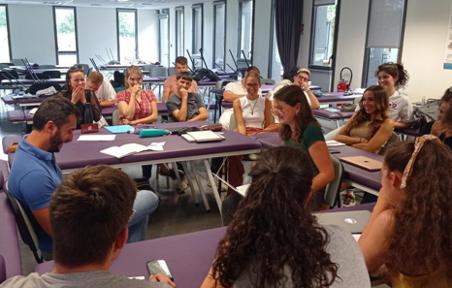
Sixty-seven Year 3 osteopathy students completed the surveys, and eight students were interviewed. CB was significantly felt (p<0.05) as the most engaging, most useful to gain feedback, and least stressful of the three trainings proposed. The CB was also perceived as similar to a DC to formulate a diagnosis and for reflective practice (p>0.05). The semi-structured interviews offered deep structured explanatory narratives depicted from thematic analyses. Five themes emerged: engagement, clinical reasoning improvement, stress, ideas for improving clinical training, and reflective practice and self-assessment. The simulation-based training implemented in this study was positively perceived by students for their clinical education. Future
References:
Aebersold, M., 2016. The History of Simulation and Its Impact on the Future. AACN Adv. Crit. Care 27, 56–61. https:// doi.org/10.4037/aacnacc2016436
Alinier, G., 2011. Developing High-Fidelity Health Care Simulation Scenarios: A Guide for Educators and Professionals. Simul. Gaming 42, 9–26. https://doi. org/10.1177/1046878109355683
Fitzgerald, K., Denning, T., Vaughan, B., 2017. Simulated learning activities as part replacement of clinical placements in osteopathy: A case study. Int. J. Osteopath. Med. 26, 44–48. https://doi. org/10.1016/j.ijosm.2017.10.003
research could focus on the effectiveness of game-based simulation versus traditional training on clinical competencies acquisition.
All presentations from the OsEAN’s 8th “Open Forum for Osteopathic Education” conference can be downloaded following this QR-code:

Fitzgerald, K.M., Denning, T., Vaughan, B.R., Fleischmann, M.J., Jolly, B.C., 2019. Simulation can offer a sustainable contribution to clinical education in osteopathy. Chiropr. Man. Ther. 27, 38. https:// doi.org/10.1186/s12998-019-0252-0
Goldshtein, D., Krensky, C., Doshi, S., Perelman, V.S., 2020. In situ simulation and its effects on patient outcomes: a systematic review. BMJ Simul. Technol. Enhanc. Learn. 6, 3–9. https://doi. org/10.1136/bmjstel-2018-000387
Issenberg, S.B., Mcgaghie, W.C., Petrusa, E.R., Gordon, D.L., Scalese, R.J., 2005. Features and uses of high-fideli
ty medical simulations that lead to effective learning: a BEME systematic review. Med. Teach. 27, 10–28. https://doi. org/10.1080/01421590500046924
Mhadhbi, H., Ménard, M., Bourgin, M., 2020. “Clinical Battle”: An educational setting based on simulation and gamification : Implications for osteopathic clinical training, in: 6th Annual Meeting of the Foundation C.O.ME. Collaboration, 2-3th October 2020, Paris (France).

www.osteopati.org 23
Figure 1: Clinical battle sequence course (Institut d’Ostéopathie de Rennes-Bretagne, September 2022)
Hakim Mhadhbi
Osteopath MSc Biomechanics
The Role of the Osteopath in Sports Medicine – injury prevention and rehabilitation
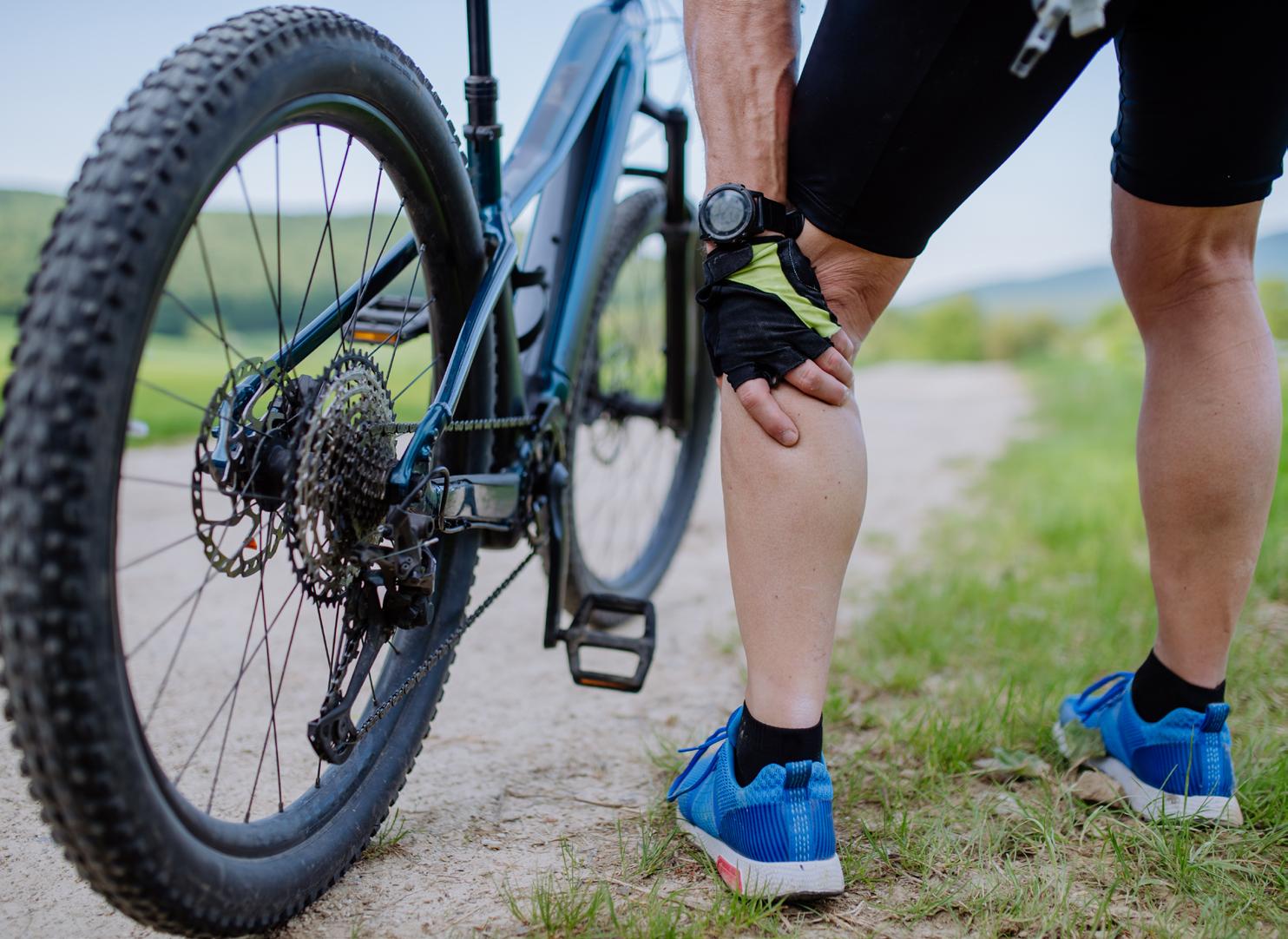 Text: Martin Stav Engedahl
Text: Martin Stav Engedahl
Many osteopaths work in sports medicine. Some work with professional athletes, some in a multidisciplinary sports medical team and some with the weekend warrior at the clinic.

Regardless of the level of the athletes, you should be aware of what your role is as an osteopath. In this editorial I will discuss the role of the osteopath in two main areas of sports medicine: injury prevention and rehabilitation.
Preventing injury
An important role for health professional working in sports is to minimise sports related injuries. Injury prevention is a complicated process and should be sport and athlete specific. A major goal in sports medicine is to reduce the risk of obtaining an injury. Injury causation is multifactorial and complex, and all factors need to be considered when analysing injury risk. There are several models that describes the causation of injuries (1-3). These models can serve as a framework for health professionals that want to prevent injuries in a systematic way. If we investigate the research on injury prevention the evidence tells us that we can reduce the magnitude and severity of several different injuries (4-6).
Research on injury prevention interventions primarily focus on the physical aspects of injury risk. However, it is important to recognize that injury risk consists of more than just sports participation, and therefore injury prevention should address more than just the physical aspects (7). There are several other factors that contribute to injury risk and figure 1 illustrates how sports related and non-sports related factors contribute to injury risk. All these factors need to be analysed to understand the total injury risk for the individual athlete. Injury preventive exercises and training interventions will not reach their full protentional if the athletes don’t sleep enough, have poor nutrition, or have to many things going on in their lives. The osteopath’s role in injury prevention is to have knowledge of all factors that increase the risk of injury and give individualised and evidence-based advice on how to minimise the injury risk to athletes, coaches, parents, and other significant people.
Rehabilitation of injury
Criteria-based rehabilitation is a modern way to plan and carry out rehabilitation and exists for anterior cruciate ligament rupture, hamstring strain injury and lateral ankle sprain (8-10). The purpose of criteria-based rehabilitation is to secure both a safe and effective return to sport. During the rehabilitation there are several criteria the athlete will be evaluated on. These criteria assist the health professional assess the athlete’s physical and mental status and inform the progression of the rehabilitation and return to sport.
The foundation of sports injury rehabilitation is a progressive, targeted, individual and sports specific exercise program. Sports injury rehabilitation progresses through phases based on sound clinical reasoning (11). The rehabilitation framework is commonly structured with four
phases: 1) The acute phase, 2) Restoration of activities of daily living, 3) The sports specific phase and return to sport and 4) Prevention of re-injury.
Active rehabilitation can be supplemented with adjunctive therapies like manual therapy, shockwave, orthosis, or taping. The main purpose of adjunctive and manual therapy specific is to enhance the outcome of the active rehabilitation. Manual therapy has several benefits and can among others facilitate exercise through pain modulation, improvement of range of motion, decrease fear of movement and activate painful muscles in a controlled manner through isometric contractions (12, 13).
As an osteopath it is important to have broad knowledge of the rehabilitation process, the relevant sport, and the specific injury. Manual
24 Nordic Osteopathic Journal
Figure 1: Injury risk is influenced by both sports related factors and non-sports related factors. All of these must be considered when analysing the total injury risk.
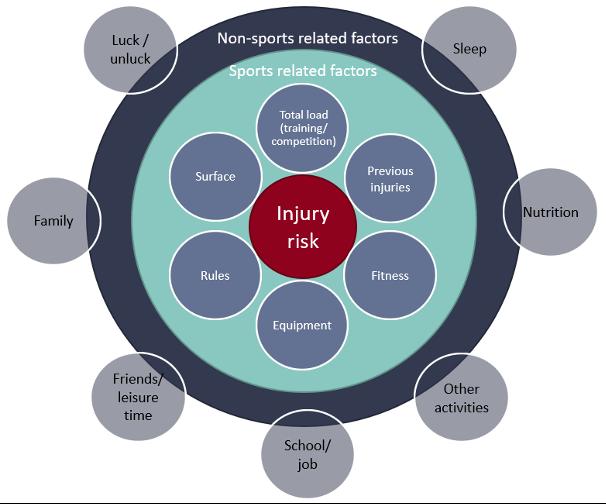
therapy as part of rehabilitation should be based on a thorough physical examination and good clinical reasoning and only be carried out if it will enhance the effect of exercise, contribute to exercise compliance, provide pain relief, or facilitate recovery. It is necessary to understand how manual therapy can enhance the rehabilitation and contribute to a safe and effective return to sport and performance through all phases of rehabilitation.
Manual therapy and exercise should always be conducted with respect to the tissue-specific healing processes. If there is a risk that manual therapy can aggravate the injury it should be avoided. Manual therapy used correct and in combination with other treatment modalities is high value care (13).
Finally, I will propose five core principles for manual therapy of sports injuries: 1. Do no harm – make sure manual therapy is safe and does not make the injury worse.
2. In the acute phase, avoid treatment of the injured site. Protect the injury.
3. Manual therapy must be performed with respect to the healing process (e.g., inflammation)
4. Manual therapy is an adjunctive and not a stand-alone therapy and should only be performed if it enhances rehabilitation.
5. Sports injury rehabilitation is an interdisciplinary teamwork with the athlete at the centre. All decisions regarding the rehabilitation, including manual therapy, should be made by the team.
References:
1. Bahr R, Krosshaug T. Understanding injury mechanisms: a key component of preventing injuries in sport. Br J Sports Med. 2005;39(6):324-9.
2. Finch C. A new framework for research leading to sports injury prevention. J Sci Med Sport. 2006;9(1-2):3-9; discussion 10.
3. Meeuwisse WH, Tyreman H, Hagel B, Emery C. A dynamic model of etiology in sport injury: the recursive nature of risk and causation. Clin J Sport Med. 2007;17(3):215-9.
4. Andersson SH, Bahr R, Clarsen B, Myklebust G. Preventing overuse shoulder injuries among throwing athletes: a cluster-randomised controlled trial in 660 elite handball players. British Journal of Sports Medicine. 2017;51(14):1073-80.
5. Olsen O-E, Myklebust G, Engebretsen L, Holme I, Bahr R. Exercises to prevent lower limb injuries in youth sports: cluster randomised controlled trial. BMJ. 2005;330(7489):449.
6. Soligard T, Myklebust G, Steffen K, Holme I, Silvers H, Bizzini M, et al. Comprehensive warm-up programme to prevent injuries in young female footballers: cluster randomised controlled trial. BMJ. 2008;337(dec09 2):a2469-a.
7. Soligard T, Schwellnus M, Alonso JM, Bahr R, Clarsen B, Dijkstra HP, et al. How much is too much? (Part 1) International Olympic Committee consensus statement on load in sport and risk of injury. Br J Sports Med. 2016;50(17):1030-41.
8. Van Der Horst N, Backx F, Goedhart EA, Huisstede BM. Return to play after hamstring injuries in football (soccer): a worldwide Delphi procedure regarding definition, medical criteria and decision-making. British Journal of Sports Medicine. 2017;51(22):1583-91.
9. Meredith SJ, Rauer T, Chmielewski TL, Fink C, Diermeier T, Rothrauff BB, et al. Return to sport after anterior cruciate ligament injury: Panther Symposium ACL Injury Return to Sport Consensus Group. Knee Surgery, Sports Traumatology, Arthroscopy. 2020;28(8):2403-14.
10. Smith MD, Vicenzino B, Bahr R, Bandholm T, Cooke R, Mendonça LDM, et al. Return to sport decisions after an acute lateral ankle sprain injury: introducing the PAASS framework—an international multidisciplinary consensus. British Journal of Sports Medicine. 2021:bjsports-2021-104087.
11. Moksnes H, Glasgow, P. Principles of sports injury rehabilitation. Brukner & Khan’s Clinical Sports Medicine: injuries. 5 ed. Australia: McGrwa-Hill Education; 2017. p. 277-84.
12. Bialosky JE, Beneciuk JM, Bishop MD, Coronado RA, Penza CW, Simon CB, et al. Unraveling the Mechanisms of Manual Therapy: Modeling an Approach. J Orthop Sports Phys Ther. 2018;48(1):8-18.
Osteopath, PT MSc, assistant professor at School of Health Sciences, Kristiania University College, Oslo Norway.
13. Rhon DI, Deyle GD. Manual Therapy: Always a Passive Treatment? J Orthop Sports Phys Ther. 2021;51(10):474-7.

www.osteopati.org 25
Martin Stav Engedahl
Text:
When the Norwegian Research Council updated their website with information on who received their very competitive grants, I could not believe it. I sent a text to Professor Robert Froud, who is my mentor, and the Chief Investigator of the project. We [unholy words] did it. I stared out the window, reflecting on the last years and imagining the coming next years, hoping that it was a coincidence that Spotify chose the next song as “Supermassive Black Hole”
The process and personal aim
Since completion of my MSc, I have pursued funding options with the aim of securing a grant that includes a PhD opportunity. After what felt as too many declined grant applications, I didn’t think it was going to happen.
Another way to pursue a PhD is to apply for available PhD positions in competition with other academics: a competition I felt I was
destined to lose as an osteopath without accreditation in a very traditionalist based academic environment. A few failed attempts, with loads of time spent on writing applications, resulted in nothing other than gaining new experiences. Despite these efforts, Froud was persistent and took the lead on what felt as a last attempt. And we got it: funding for a full-scale clinical trial based on a feasibility study conducted in the UK within work and health.
I believe that the recognition of osteopaths within academia in Norway is slowly changing for the better. Osteopaths are now accredited and recognized as health care personnel, and it seems as more and more osteopaths pursue MSc and PhD research degrees.
My personal aim with a PhD, is not the PhD project per se, but to gain the knowledge and
competence to be able to conduct high quality research in the future. Many PhD-projects are narrowed down in terms of either topic, or methodology, which gives a unique competence in that particular research field. My aim, on the other hand, is to be more a generalist, being able to design and lead a clinical trial from the planning phase to the conducting and analysis of the trial. To become a “trialist” has a nice ring to it. To this end, I have been deeply involved in setting up the trial we received funding to conduct, and well into the adaptation of the UK feasibility study; adapting relevant evidence-based material, writing the trial protocol and conducting the internal pilot within the Norwegian setting. The aim of this brief article is to give an overview of the PhD-project and the intervention we are testing in Norway.
The funded project is titled “Returning people with persistent pain to work using Individual Supported Employment placements (ReISE)” and is led by Professor Robert Froud. ReISE was funded with 12 mill NOK from the Norwegian Research Council.
The project is a collaboration between Kristiania University College, OsloMet, University of Warwick, Manpower and the The Norwegian Council for Musculoskeletal Health.
Background for the PhD-project
Persistent (chronic) pain is the most frequent cause of sick leave and work disability in Norway; accounting for 46% and 33%, respectively (1). Most chronic pain is of musculoskeletal (MSK) origin (2). Disability benefits increased between 2011 and 2020, and the percentage outside the labour market increased between 2018 and 2022 (3, 4). Consequently, being unemployed increases the risk of poor physical and mental health while return to work (RTW) can positively influence recovery for people with common health problems (5, 6). In 2016, the costs of MSK conditions to the Norwegian health service were NOK 18 billion, and the total socio-economic costs were estimated to be NOK 255 billion (7). For many people, a job is an essential part of self-identity; yet being out of work is too often their solution (8). There is uncertainty about how best to help unemployed people with persistent pain return to work (RTW). Effective vocational rehabilitation requires a combination of work-focused healthcare together with
supportive workplaces; unfortunately, the two are generally not coordinated (9). Engaging people with persistent pain in identifying their own individual (psychosocial) obstacles to work ability, agreeing on the actions to overcome those obstacles in a RTW plan, and combining pain management advice, may be effective for this group. In 2020, a feasibility study of an adapted supported employment placement intervention, run in the UK, which featured work placement provision with case manager (CM) support was conducted (10). In this novel intervention, case managers were trained to act as a bridge between systems and institutions, engage people about obstacles to work, and collaboratively agree a RTW plan. We also provided supportive work placements. The developed intervention was acceptable and valued, with around 20% of the sample obtaining paid employment within the short six-month follow-up: self-perception of satisfactory functioning in role and management of identified obstacles, may be key to increasing confidence for this group.
As the study focused on feasibility, the effectiveness and cost-effectiveness of the intervention are unknown. Without intervention, the probability of RTW after two years of unemployment is thought to be close to zero (10).
I have several aims for my PhD project. Firstly, to culturally adapt existing material from the UK-based feasibility study for consumption by Norwegian users. Secondly, to adapt and test recruitment pathways, acceptability of delivering the intervention in an internal pilot. Thirdly, to conduct a full-scale clinical trial, and lastly, to explore the mechanisms leading to sustained work participation. Within this I aim to publish five articles in peer reviewed journals (Table 1).
26 Nordic Osteopathic Journal
“Adapting and evaluating the use of supported work placements for people who are unemployed with persistent pain”.
Pål Andre Amundsen
(Muse)
Working titles
Returning people with persistent pain to work using Individual Supported Employment placements (ReISE): protocol for a cohort randomised approach
Translating and culturally adapting UK evidence-based leaflets for use in Norway: a pragmatic approach to cross-cultural adaptation
Pilot study of a cohort randomised controlled trial of returning people with persistent pain to work using Individual Supported Employment placements (ReISE)
Methods & analysis
Returning people with persistent pain to work using Individual Supported Employment placements (ReISE): a cohort randomised approach
Mechanisms on sustained return to work within a cohort randomised controlled trial of returning people with persistent pain to work: results of a process evaluation
The cohort randomised approach
It is outside the scope of this brief overview to go in depth into each article or aim, but as the central tenet is the cohort randomised approach and the intervention, I will describe this method and the intervention in more detail. We are using a cohort randomised approach with national recruitment with embedded internal pilot, and an economic and process evaluation. Initially, all eligible and consenting participants will be recruited to an observational cohort study of the impact of being unemployed with persistent pain. After baseline measurement, using a minimisation approach (a form of randomisation which balances the properties of the control and intervention group, for example such that gender and age are relatively similar in the two groups), we will randomly select one-in-three to whom we will offer the intervention and request consent for intervention participation. Assessments are made at baseline and at three, six and 12-months of follow-up, and the primary outcome of return to work is obtained from questionnaire and registry data at 12 months after baseline. At these time-points we will also use registry data to estimate hospital and community health and social care use for our economic analysis within a personal social services perspective. The internal pilot will check logistical processes of the study and that we can recruit enough participants with a sufficient number of participants accepting the offered intervention.
The intervention
We will first train two to four people with prior experience of working with pain patients
Cultural adaptation process [Quantitative, descriptive]
• Developed a modified conceptual framework for a pragmatic research process used in translation of evidence-based health information resources in the work-health interface
Piloting cohort randomised controlled trial [Quantitative, descriptive]
• Training of CMs and facilitators
• Pathways of participant recruitment
• Feasibility of administering the outcome measures and collect data (questionnaire)
Cohort randomised controlled trial [Quantitative, between group differences, economic evaluation]
• Informed by internal pilot
Process evaluation [Qualitative, Mixed methods]
• Focus groups, in-depth interviews, field-note analysis
(e.g., osteopaths, other manual/occupational therapy, or psychology) to function as case managers (CMs) for participants; identifying obstacles to RTW using the Psychosocial Flags Framework and a set of stem questions (10, 11). This method takes a biopsychosocial perspective to identify and tackle obstacles across personal, workplace and social domains, culminating in a RTW Plan. CMs will also receive training on pain management strategies and benefits system, as they will be unaffiliated with the Norwegian Labour and Welfare Administration (NAV), which our user input suggests may be important. The trained CM will contact participants by phone to make an initial assessment, explore work-aspirations and skills, and help the participant to identify work obstacles. The CM will in collaboration with Manpower, which is a staffing provider, match the participant with a placement, based on skills, aspirations, and suitability. Manpower will provide sixweek part-time work placements of up to 16 hours per week. Placements will span roles in administration, warehouse, transport, media and marketing, IT, sales and service, finance, accounting, and payroll. Once a placement is arranged, the CM, the participant, and the placement manager will meet to agree on an RTW plan and discuss whether any work accommodations are needed to overcome identified obstacles to returning to work. Our support model features a work-familiarisation session to help embed the person into their role and discuss work-focused pain management. The session will be run over two days by one to two facilitators in required geographic locations, and possibly by video link. The CM
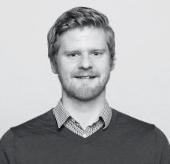
will then provide regular telephone/video support to the participant and placement manager, which is known to be effective (12). If needed, the CM may suggest referrals to existing health services – for example, for cognitive behavioural therapy which have been proven effective (13). The CM will also aid clinicians in providing work-focused healthcare through provision of existing evidence-based resources. Similar materials are given to all participants and placement providers, and include culturally translated versions of; 1) Advising Patients About Work 2) Health & Work, and 3) Work & Health from the HealthWork Toolbox (14-16). These will be available in Norwegian and English, following success of offering these languages in a trial of motivational interviewing that is being conducted for people sick-listed with pain in Norway (17).
The way forward
The project started in November 2021 and will run for three years. We have set up the trial and are now running the internal pilot which will inform the main trial. It is exciting times ahead, and I am looking forward to share more in due course. Personally, I have gained more knowledge about the process of setting up a trial than I could have imagined during the first year of the PhD. I am lucky to have an inclusive mentor and a very competent and experienced research team that I learn from.
www.osteopati.org 27
Table 1. Planned articles
Pål Andre Amundsen Osteopath with a Master of Science in Clinical Pain Management and a PhD-Fellow.
References:
1. Laerum E, Brage S, Ihlebaek C, Natvig B, Aas E. Et muskel- og skjelettregnskap: forekomst og kostnader knyttet til skader, sykdommer og plager i muskel- og skjelettsystemet: MST-rapport. Oslo: Muskel og Skjelett Tiåret; 2013.
2. Elliott AM, Smith BH, Penny KI, Smith WC, Chambers WA. The epidemiology of chronic pain in the community. Lancet. 1999;354(9186):1248-52.
3. SSB. Labour force survey. Oslo: Statistics Norway; 2020.
4. NAV. Disability benefit - Quarterly statistics 2022 [cited 2022 August 1]. Available from: https://www.nav.no/no/nav-og-samfunn/ statistikk/aap-nedsatt-arbeidsevne-og-uforetrygd-statistikk/nyheter/svak-auke-i-talet-pauforetrygda-i-1.kvartal-2022.
5. Xie Y, Hutting N, Bartys S, Johnston V. Interventions to Promote Work Focused Care by Healthcare Providers for Individuals with Musculoskeletal Conditions a Scoping Review. Journal of Occupational Rehabilitation. 2021;31(4):840-65.
6. de Vries HJ, Brouwer S, Groothoff JW, Geertzen JH, Reneman MF. Staying at work with chronic nonspecific musculoskeletal pain: a qualitative study of workers’ experiences. BMC Musculoskelet Disord. 2011;12:126.
7. Skogli E, Theie M.G, Stokke O, L L. Muskel- og skjelettsykdom i Norge: Rammer flest - koster mest. Vurdering av tiltakt for å redusere samfunnskostnadene. Menon Economics 2019.
8. Waddell G, Burton AK. Is work good for your health and well-being? : Department for Work and Pensions; 2006.
9. Waddell G, Burton AK, Kendall N. Vocational rehabilitation – what works, for whom, and when? : TSO; 2013.
10. Froud R, Grant M, Burton K, Foss J, Ellard DR, Seers K, et al. Development and feasibility of an intervention featuring individual supported work placements to aid return to work for unemployed people living with chronic pain. Pilot Feasibility Stud. 2020;6:49.
11. Kendall N, Burton AK, Main C, Watson P. Tackling musculoskeletal problems - A guide for the clinic and workplace. Identifying obstacles using the psychosocial flags framework. The Stationary Office2009.
12. Burton AK, Kendall N, McCluskey S, Dibben P. Telephonic support to facilitate return to work: what works, how, and when? . Department for Work and Pensions; 2013.
13. Waddell G, Burton AK, Kendall N. Vocational rehabilitation – what works, for whom, and when? Vocational Rehabilitation Task Group; 2013.
14. Burton AK, Waddell G. Advising Patients About Work: An Evidence-based Approach for General Practitioners and Other Healthcare Professionals: The Stationary Office; 2008.
15. Burton AK, Waddell G. Health and Work - Employee’s booklet: The Stationary Office; 2007.
16. Waddell G, Burton AK. Work and Health: Changing How We Think About Common Health Problems: The Stationary Office; 2007.
17. Oiestad BE, Aanesen F, Lochting I, Storheim K, Tingulstad A, Rysstad TL, et al. Study protocol for a randomized controlled trial of the effectiveness of adding motivational interviewing or stratified vocational advice intervention to usual case management on return to work for people with musculoskeletal disorders. The MI-NAV study. BMC Musculoskelet Disord. 2020;21(1):496.
EFFO Copenhagen
- Impressions from a Nordic member delegate
Text: Sandra Rinne
This year the European Federation and Forum for Osteopathy EFFO held its Autumn Conference and General Meeting on 22-23 September 2022 in Copenhagen at Tivoli Congress Center.

It was the second face-to-face meeting after the pandemic interlude and succeeded the live meeting in Oslo last autumn.
During this meeting almost all member countries were able to be represented in person and altogether 24 countries were participating in this gathering. The sense of relief of being able to be physically in the same space was obvious.
The autumn conference event included a variety of presentations from board members, committee chairs, member delegates and guests. In addition to the presentations, roundtable discussions were held, as well as small group discussions. On the second day of the gathering, the Annual General Meeting took place.
The board together with the president Hanna Tómasdóttir and CEO Maurice Cheng had prepared a well-balanced program consisting of current topics for the profession in general, updates of what the EFFO has done and descriptions of the future plans. There was a sense of calm and space for comments and discussions that enriched the days together.
OIA intro - Ana Paula Ferreira (OIA immediate past president, Brazil)
A special guest in the meeting was the immediate past president of the Osteopathic International Alliance Ana Paula Ferreira, who gave an introductory presentation of the worldwide representative organization of osteopathic associations and educational institutions. It highlighted how the two large associations - EFFO and OIA - complement each other and work hard to create the best possible circumstances for osteopaths and the patients of osteopaths globally. The presentation potrayed the ways of working of the organization and the projects that the OIA is currently working on. It was very meaningful to have this presentation in person and directly from the source.
28 Nordic Osteopathic Journal
Historical Retrospective on EFO, FORE and EFFO
The OIA presentation was followed by a retrospective on the history of the EFFO, including the longstanding journey of the predecessor organizations EFO (European Federation of Osteopaths) and FORE, the Forum for Osteopathic Regulation in Europe. Board members
Jonathan Bailey-Teyletche (vice-president) and Dimitri Boulenger (treasurer) gave the presentation. Knowing one’s history is essential; hearing the story from the people that have been creating it is a
luxury
Good practices from different countries Identity of the profession (NL, BE)
Good practices from different countries were shared to inspire each other, as is the aim in all of the meetings. This time the theme was the identity of the osteopathic profession. More specifically how to create a shared identity and how associations could support the membership in communicating with other healthcare practitioners and the public in a professional manner.
to their members containing a training pitch, where emphasis has been placed on language and statements on websites plus the story being told. The usefulness of the same basic story being told and retold by many members, with the same symbols and titles attached, helps to strengthen the brand of osteopathy. This is an ongoing project in collaboration with the membership.
How to present the profession: Julien Bosc from Belgium continued on the same subject with his presentation “How to present the profession: a case study from Belgium”. The Belgian umbrella organization had focused on studying patients’ and doctors’ perceptions of osteopathy and concluded that many physicians wanted to know more about osteopathy. Several measures were taken to support the promotion of the osteopathic profession nationally, including the following: a publication on osteopathy in a medical journal, recruitment of ambassadors of osteopathy from the membership, and a remake of the website osteopathie.be to serve the public even better. The key message is that osteopathy is
will take place. Board member Lluis Horta presented the plans and will help guide the organization through the change of visual image, logo, name… in short, re-branding what we now know as EFFO. The decision to change our name to Osteopathy Europe was unanimously accepted by all member countries in Copenhagen! It stands for a united voice of osteopathy in Europe. We are all looking forward to seeing the changes, this piece of news is definitely something to follow up.
Committee presentations - plans for the future
The EFFO has for the past years had four different working groups - now committees- in order to function more efficiently. All committee chairs had their turn to present what their focus had been and what their plans were for the coming year. The committees with their respective chairs are Research CommitteeDawn Carnes, Communications Committee - Laura Lee Kamppila, Education Committee
- Tomas Collin and Policy Committee - Hanna Tómasdóttir.
Defining Osteopathy: The Dutch representative Mendel Blokland described in his presentation “Defining Osteopathy: case study in the Netherlands”, how the Dutch Osteopathic Association has worked on educating their membership on communication with different stakeholders. In order to do so, a thorough process of defining what osteopathy is and what belongs to an osteopathic treatment and what doesn’t was conducted among the membership.
Now that the initial project is completed, the association has provided a starter package
person-centered, mainly manual healthcare. To support their membership in serving the public and patients, the website includes a brief presentation on what osteopathy is, for whom and how to prepare for the first consultation/visit, followed by a clear FAQ section.
The future - Osteopathy Europe! Maybe you have sometimes had to rethink what the abbreviation EFFO stands for - or forgotten the exact version of the long name: European Federation and Forum for Osteopathy. The happy news is that the somewhat complicated name will be much easier in the future. During next year, a re-branding
All of the committees work via regular online meetings, on their own projects. Research committee will among other things continue with disseminating research, communicate on research opportunities, support webinars on research and work further on guidelines for osteopaths on how to work in an evidence-informed way. Communications committee will focus on bettering the structures of internal communication and creating a database of information that will be easily available for all the members. This will help the member organizations to benefit from shared content and good practices from across the membership. The education committee will be working on developing guidance for the members regarding undergraduate and postgraduate training, and CPD in general, help reflect on use of titles and accreditation, inform about postgraduate possibilities and discuss the core competencies for undergraduate training. The policy committee that has produced the successful Regulation document on the regulated countries in Europe will be working on a new document: Road to regulation. This document is meant to support the non-regulated countries on their way to regulation. Furthermore, the committee will regularly up-date the existing Regulation document, keep guiding the countries needing support and hopefully see more countries reach regulation.
Being a member of one of the committees (in my case education) gives a very rewarding insight into this new way of committee working. It also gives an understanding of how much
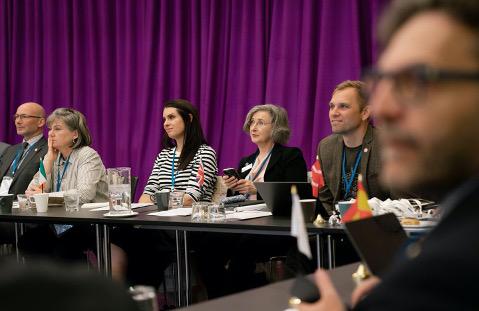
www.osteopati.org 29
time and effort goes into each committee’s working. Representing the results and the aspirations of all the committees in person while being able to comment and discuss them with the entire body of representatives is very inspiring.
Hanna Tómasdóttir and Jonathan Bailey-Teyletche presented the new 3-Year Plan for the EFFO for 2023-26. This included revisiting the EFFO Vision and Mission. The plans of the commitees are clear and this in turn helps the entire organization move forward. Exciting to see what the future brings, in combination with the re-branding.
ments in Europe during the Conference and official Meeting, the social part of the programme provides room for sharing of ideas and peer support among the member delegates/members/representatives.
While getting to know Copenhagen better through a wondrous boat trip through the canals of the beautiful city and while being guided by local inhabitants in a memorable tour of the Freetown Christiania, many stories were shared. There was room for networking, which again strengthened our profession for the future. A big Thank You to the hosts of the whole event!
years, as in just a few years two countries have been fully regulated in the north.
It gives a strong sense of stability to belong to an organization that keeps on growing and working for the benefit of the profession.
Succession planning was also explained in detail by Jonathan. Joining him on stage were three more board members: Dimitri Boulanger, Alex Boon and Richard Weynen. All four of them have been involved with the European politics of osteopathy for 30 years now. They took an initial farewell from their work on the board, as during the meetings next year new members will be elected to join the board when they retire.
General Meeting
The General Meeting at the end of the 2-day meeting was led by Maurice Cheng. The meeting was well prepared with the presentations of the different committees. New membersPortugal and Brazil- were welcomed and the business plan and budget were accepted unanimously by the membership. Efficient work!
Spending free time together
- Networking á la Copenhagen Apart from hearing about positive develop-
Impressions from a delegate’s perspective

Having witnessed the beginning of the Forum for Osteopathic Regulation in Europe well over a decade ago, it is heartwarming and inspiring to see how established, well-organized and professional the cooperation on a European level has become. The board is skillfully steering the entire operation whilst the committees bring their input on the table.
Having the different committees with members with expertise as participants of the group has had a very positive impact on the working of the whole organisation. The continuous development achieved by this new architecture is beneficial for the on-going development and guarantees that different projects organically progress.
It is delightful to see that there is a broad Nordic representation at the European level, which is a positive sign and a good development for the Nordic region overall. This might also reflect the advancement of the recent

References:
European Federation and Forum for Osteopathy EFFO: https://www.effo.eu/
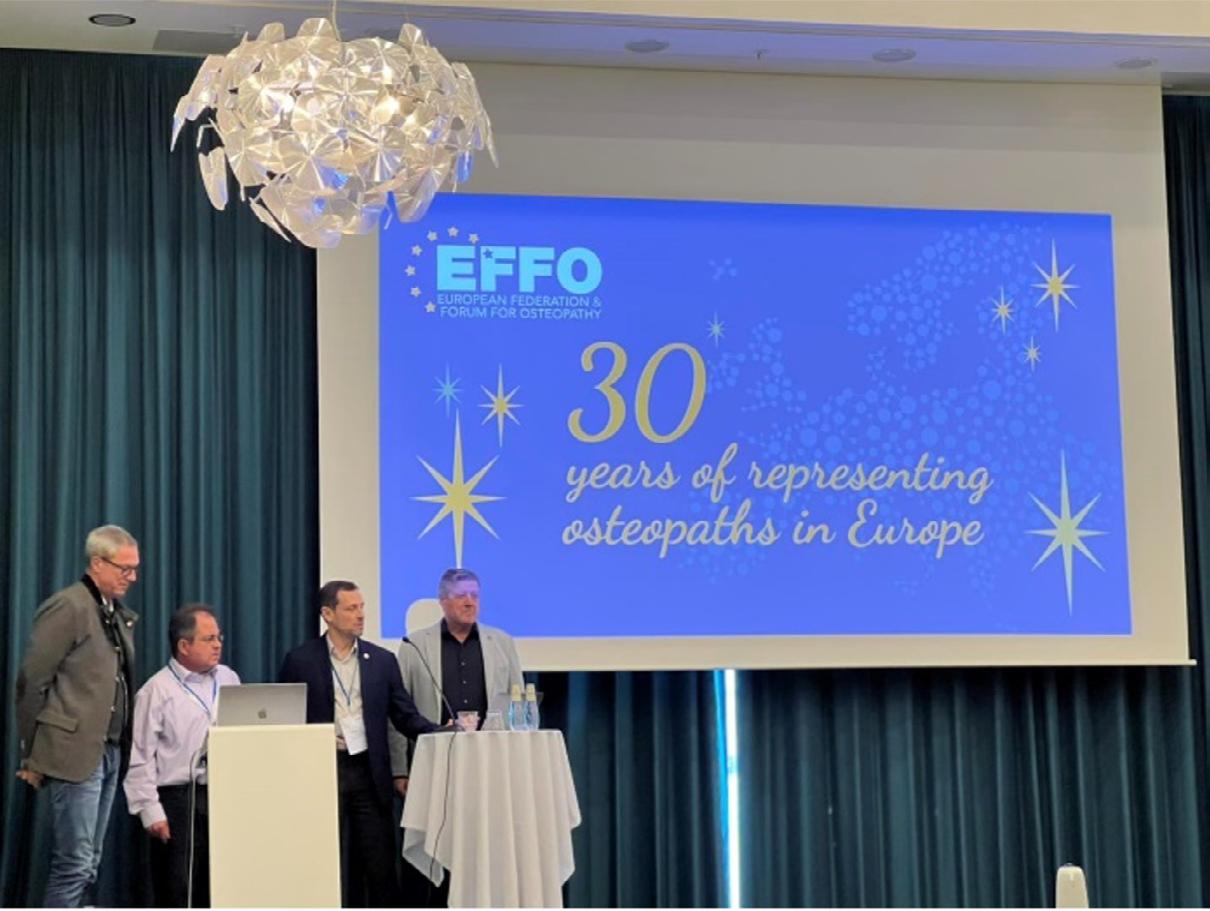
Regulation of the Osteopathic Profession in Europe. Second edition. 2022. https://www.effo.eu/wp-content/uploads/2022/09/Regulation-of-Osteopaths-Europe-SEPT-2022-DP.pdf
Osteopathic International Alliance: https://oialliance.org/
The OIA Global Report: Global Review of Osteopathic Medicine and Osteopathy 2020 https://oialliance.org/the-oia-global-report-global-review-of-osteopathic-medicine-and-osteopathy-2020/
Sandra
30 Nordic Osteopathic Journal
Rinne Board member of the Finnish Osteopathic Association
Photo: Pelle P. and the Danske Osteopater
A functional approach to managing hip and spinal disorders in the athlete: Part 1

Date: April 21-22nd 2023
Location: Oslo, Norway
Language: English
Dr Carl Todd is a registered osteopath, lecturer, published author and a certified strength and conditioning specialist. Carl has a PhD in orthopaedics and clinical science, Masters degree in sport injury medicine and an Honours degree in osteopathy.

Carl has gained a wide-ranging experience from working for two decades across elite sport, that includes athletics, basketball, football and skiing. In 2005 Carl became the first osteopath to be appointed by The Football Association and work with the England Football team.
Based upon current scientific research combined with clinical experience developed from working in elite level sports. This course is aimed at a wide range of healthcare professionals to enhance their evidence informed clinical practice for developing clinical, therapeutic and reasoning skills.
Two-day course comprising of a functional, biomechanical and biopsychosocial analysis model, that can be used as a diagnostic tool to highlight kinetic chain and or specific segmental dysfunctions to the spino-pelvic-hip complex.
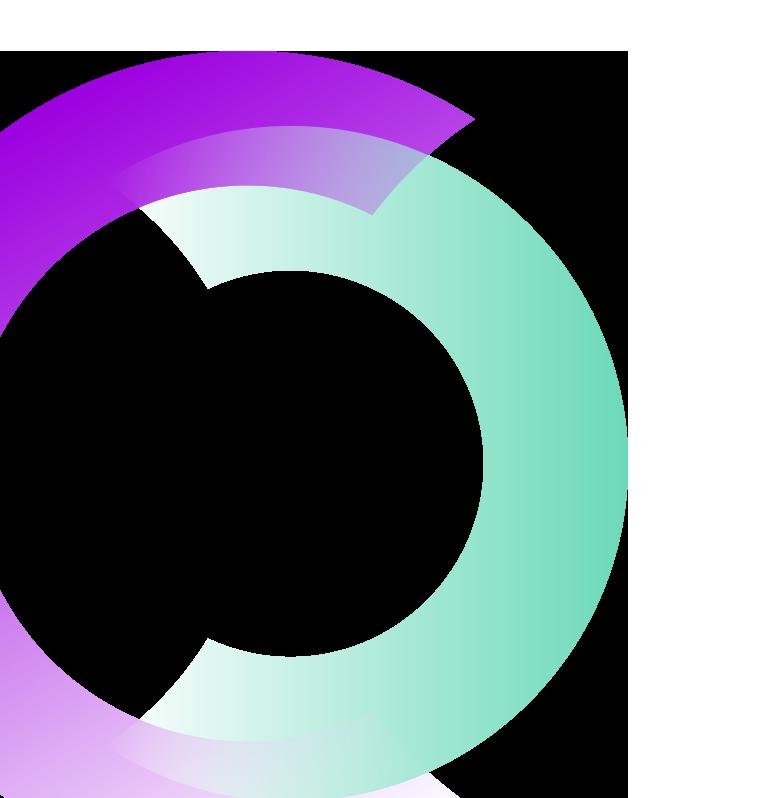
Application of treatment using advanced manual techniques to the lumbar spine, pelvis and hip joint complemented by management strategies incorporating facilitation techniques and segmental control exercises.
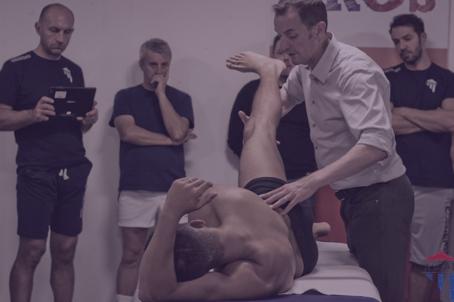
LEARNING OBJECTIVES
• Learn the fundamental understanding between the association of the spino-pelvic-hip complex.
• Simplify the clinical examination of the articular, myofascial and neural systems specific to the individual.
• Develop a rationale to make an informed decision for treatment based upon clinical understanding.
• Understanding of exercise dosage encompassing non-functional, functional motor control and work capacity parameters to address mobility and CNS adaptations.
• Develop a rationale to make an informed decision to prescribe appropriate corrective exercise based upon clinical reasoning.
• Case studies to develop and challenge clinical reasoning.
www.osteopati.org 31

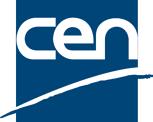
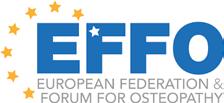



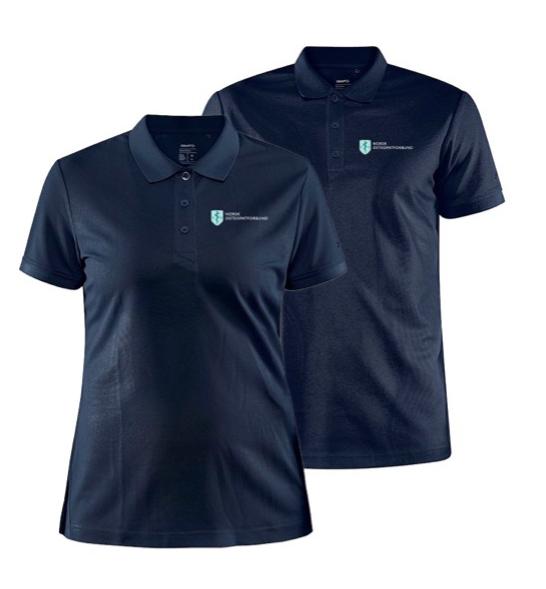
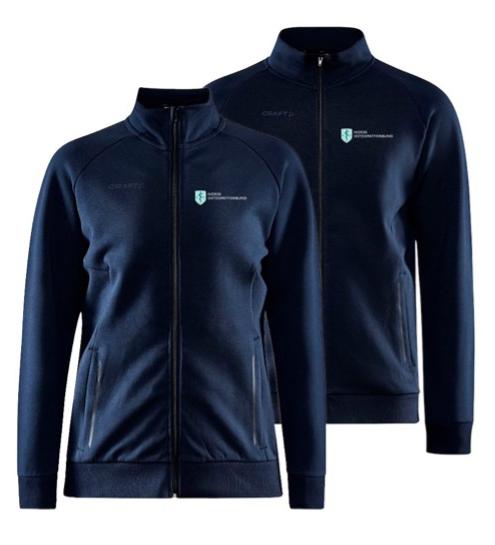



Norsk
B NORSK OSTEOPATFORBUND HUSK DEADLINE FOR BIDRAG TIL OSTEOPATEN NR. 1/2023 22. FEBRUAR 2023 Norsk
har oppdatert nettbutikken med nytt profiltøy og ny flyer. Har du sett vår oppdaterte nettbutikk? Poloskjorte: 349,- Cardigan jakke: 799,- Urban regnjakke: 1 449,Flyer (100 pk): 300,Paraply: 250,Link til nettbutikken finner du på medlemsweb. NORSK OSTEOPATFORBUND Retur: NOF v/Tomas Collin, Kjernåsvn. 13A, 3142 Vestskogen
Redaksjonen: Ingrid Nicander (redaktør) Tomas Collin Emilie Sørlie Osteopaten
Osteopatforbund nof@osteopati.org Grafisk design: Appell Reklamebyrå AS, Drammen Trykk: Lier Grafiske
Osteopatforbund




















































 Text: Andreas Sønderriis
Text: Andreas Sønderriis



















 Text: Martin Stav Engedahl
Text: Martin Stav Engedahl























